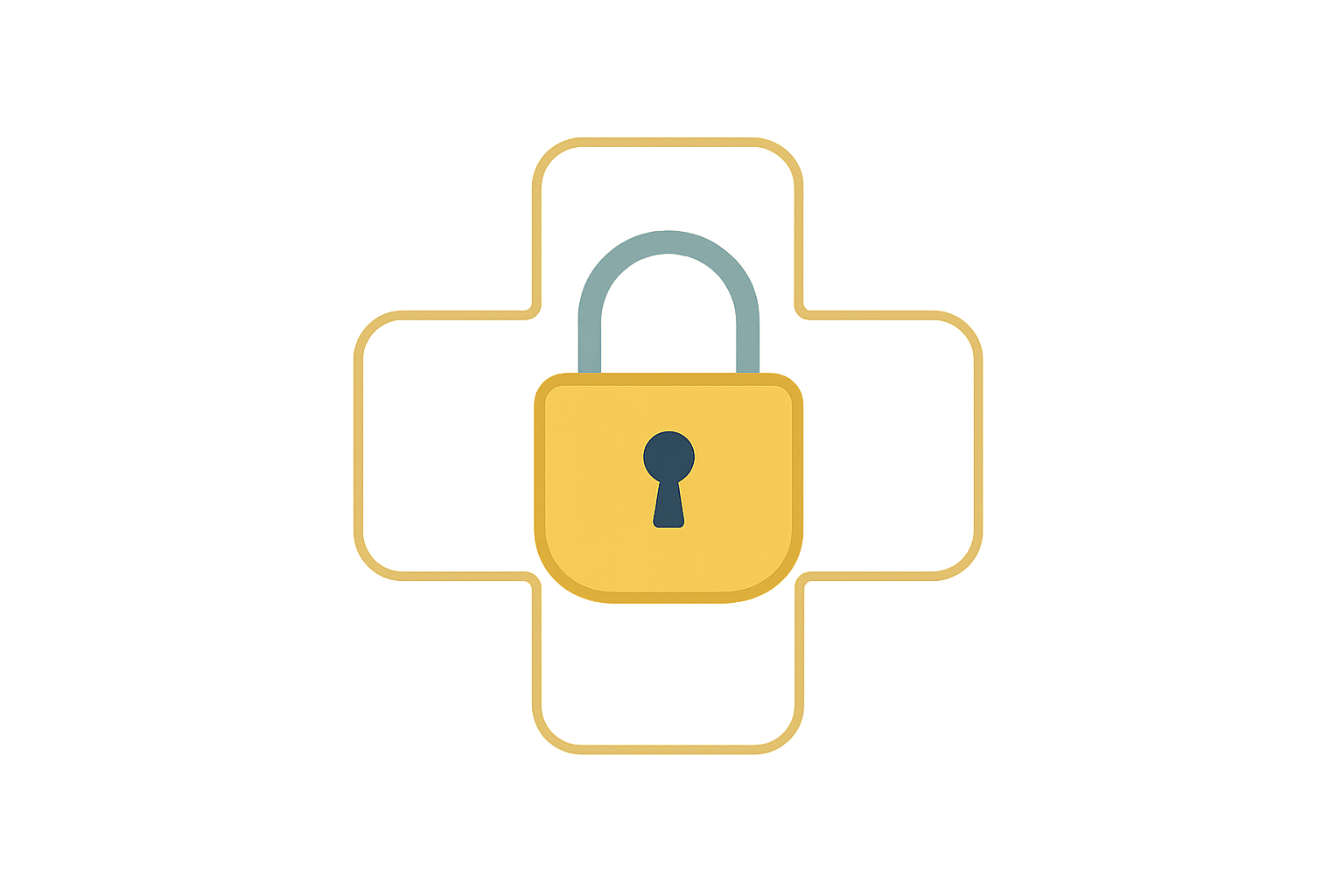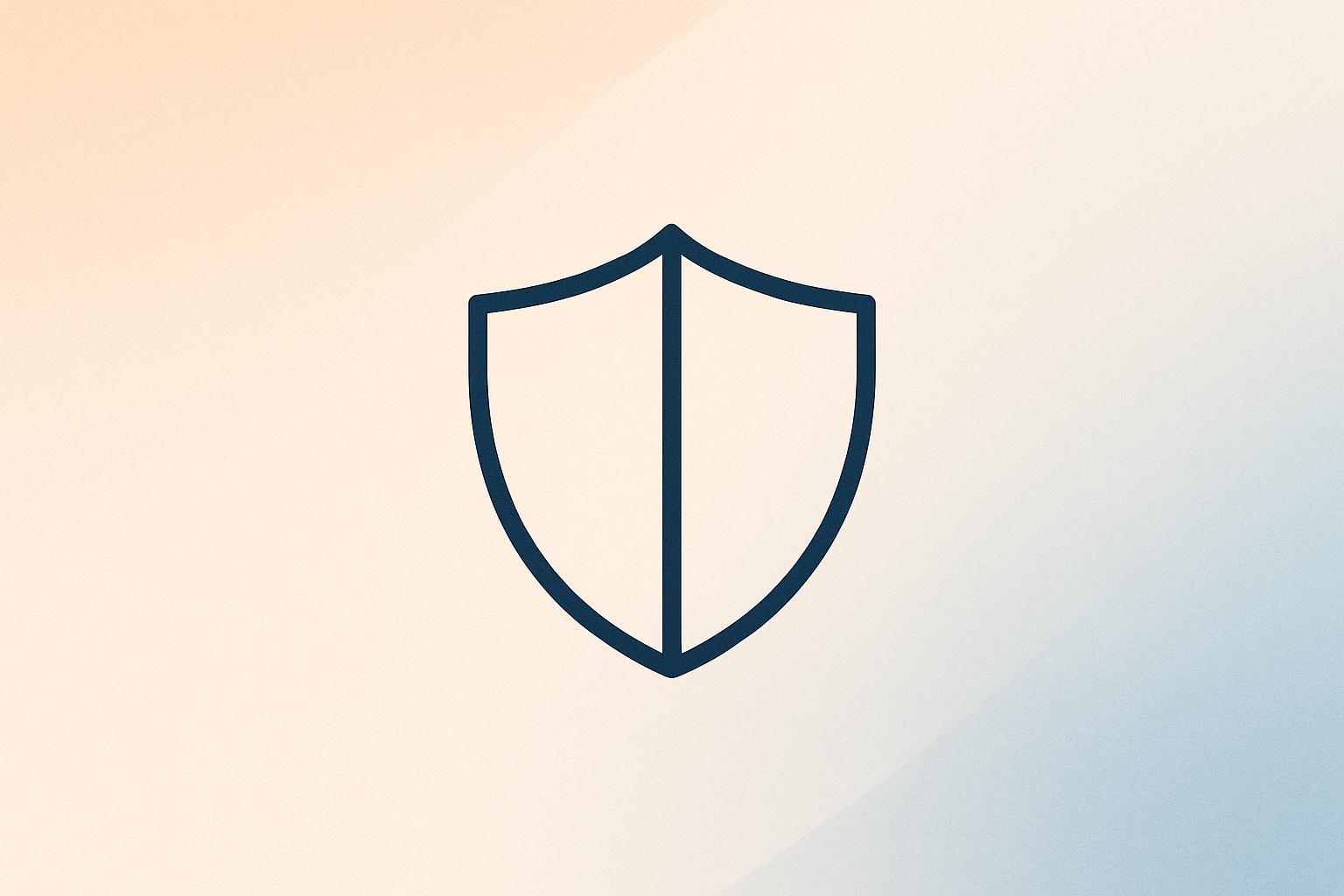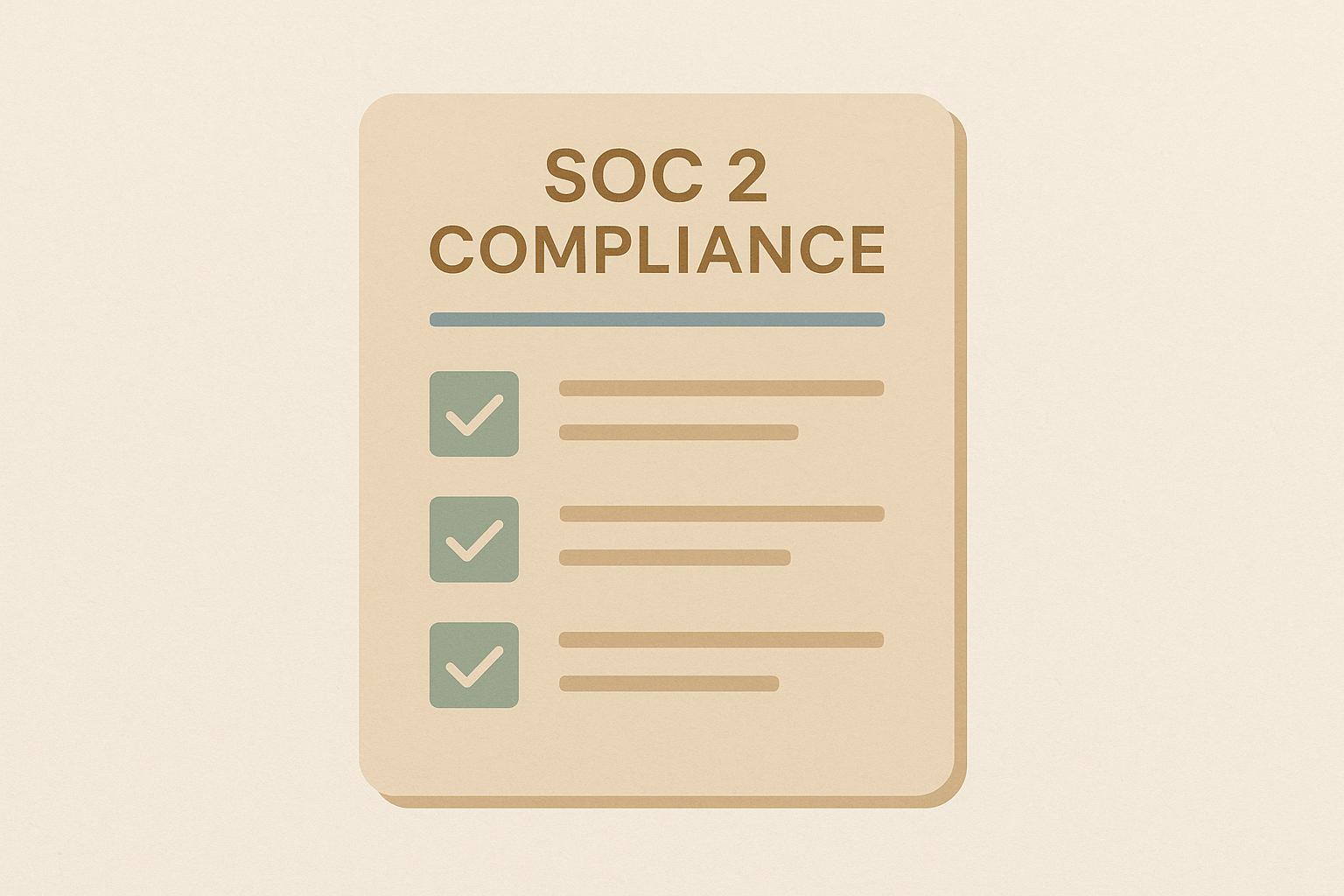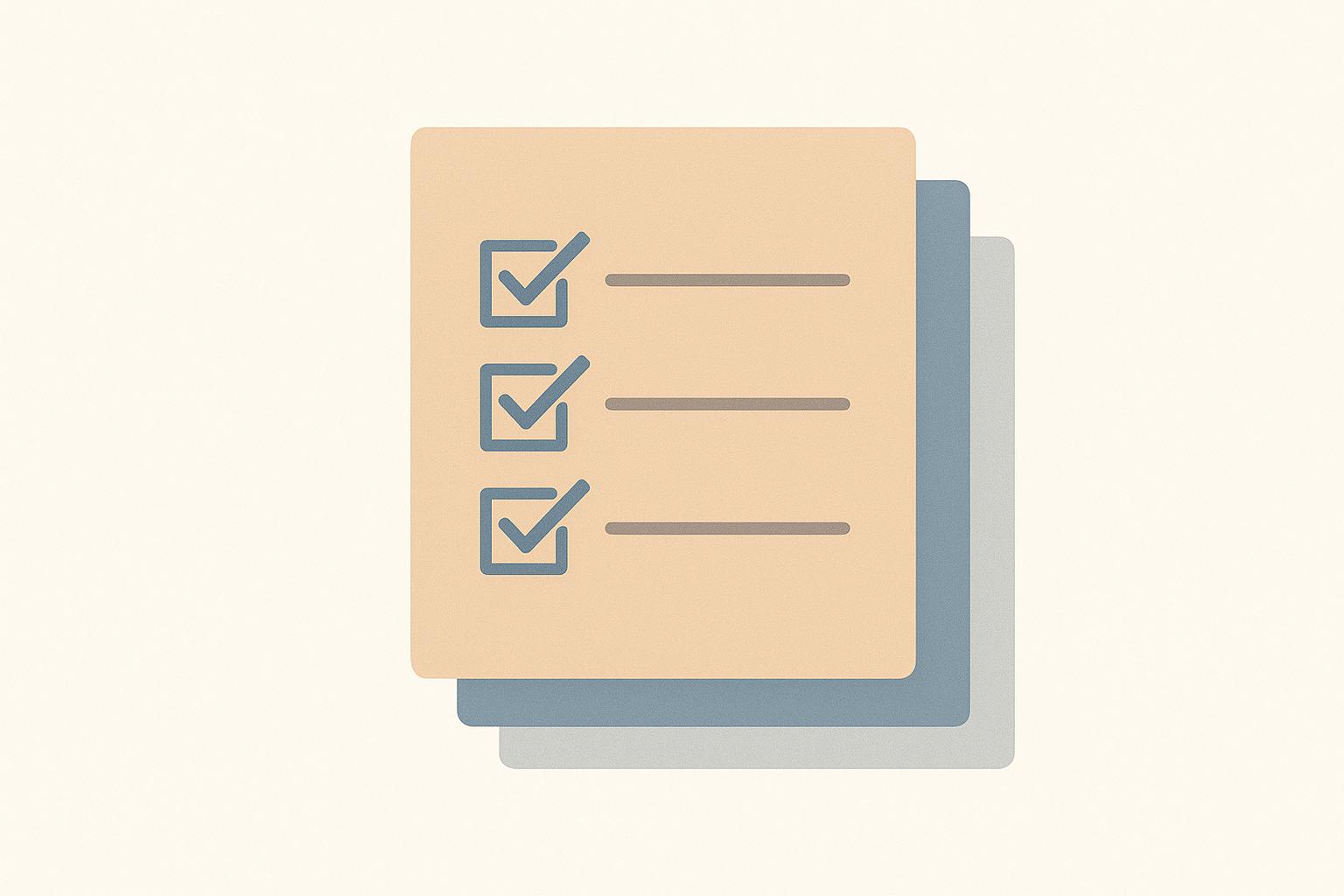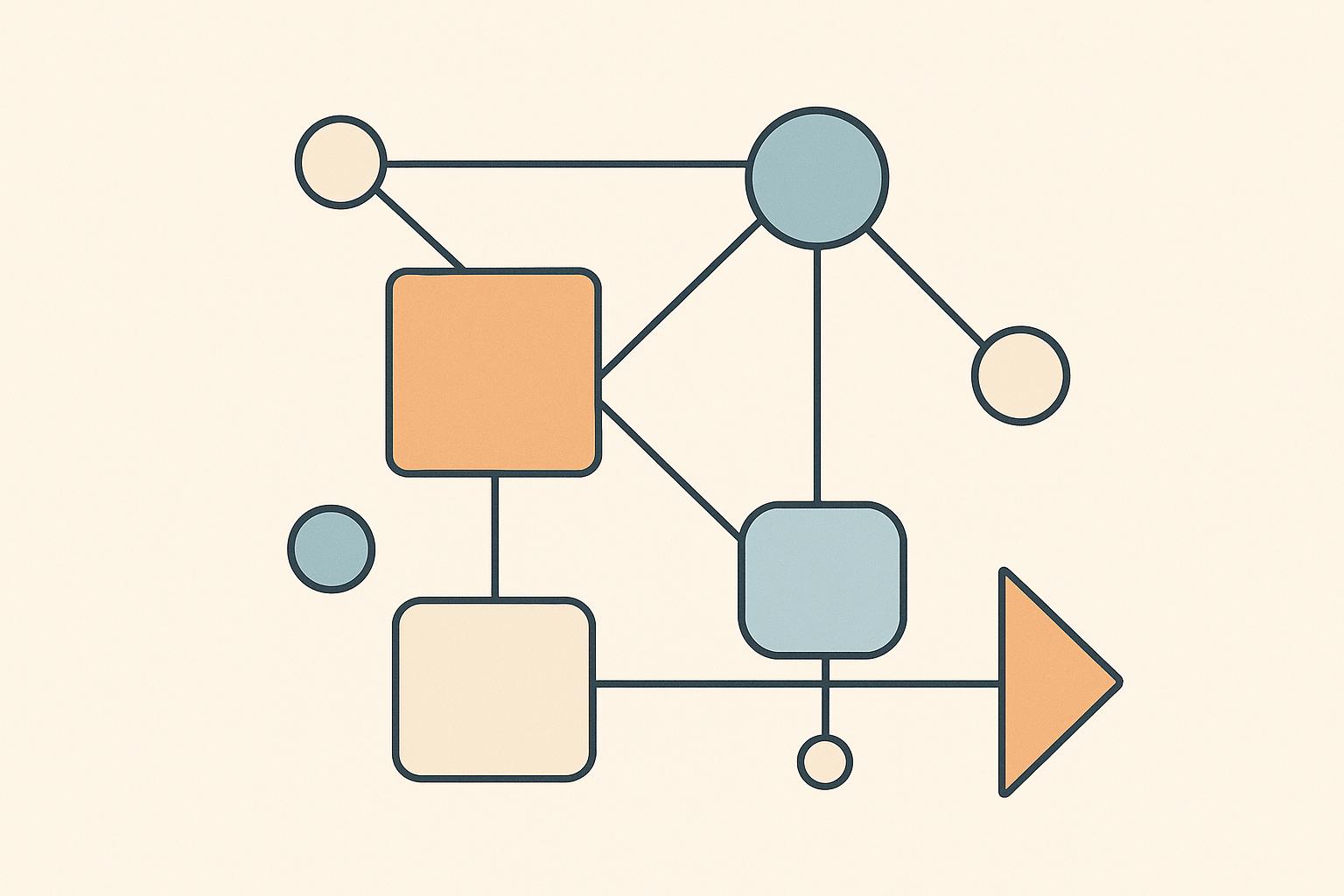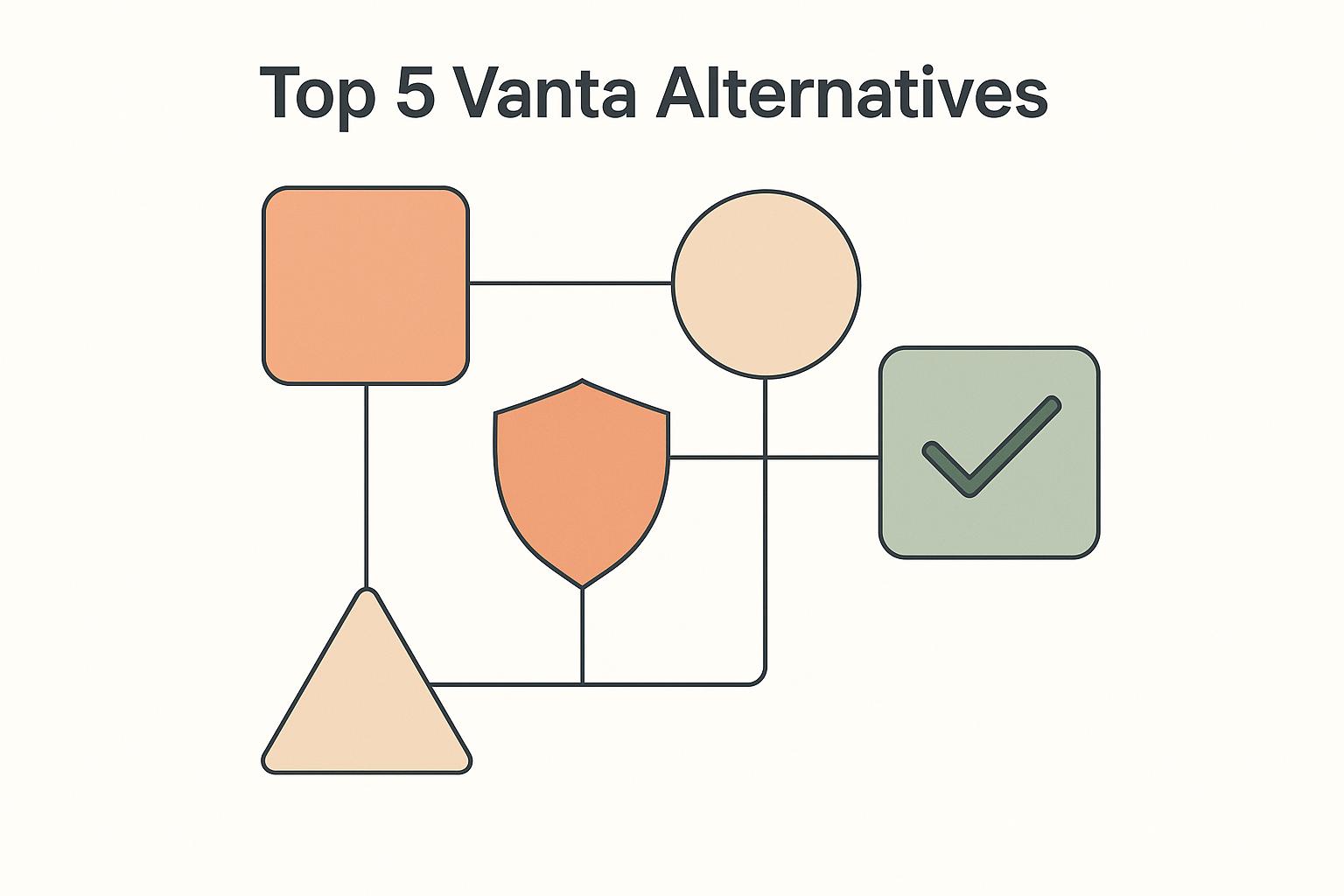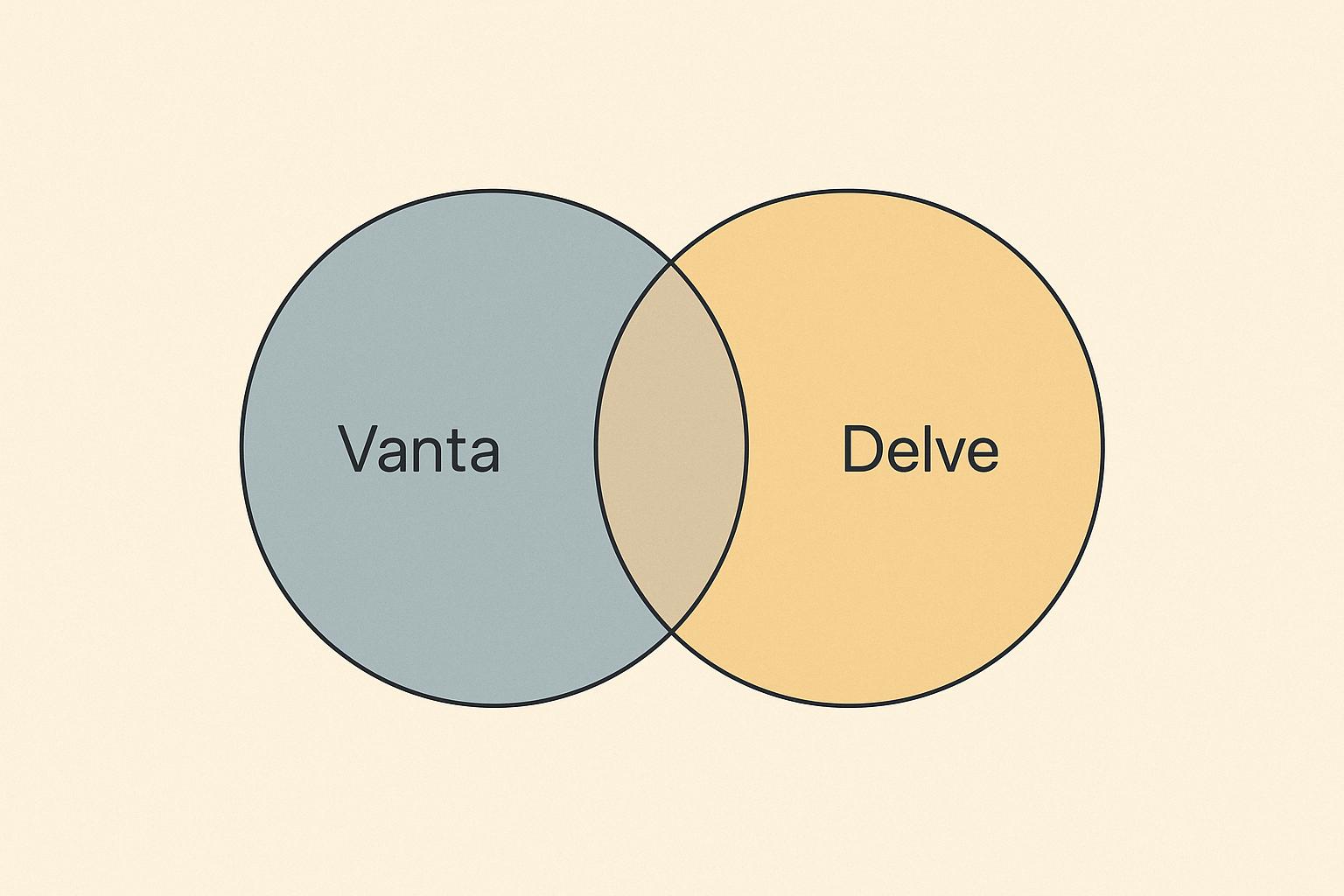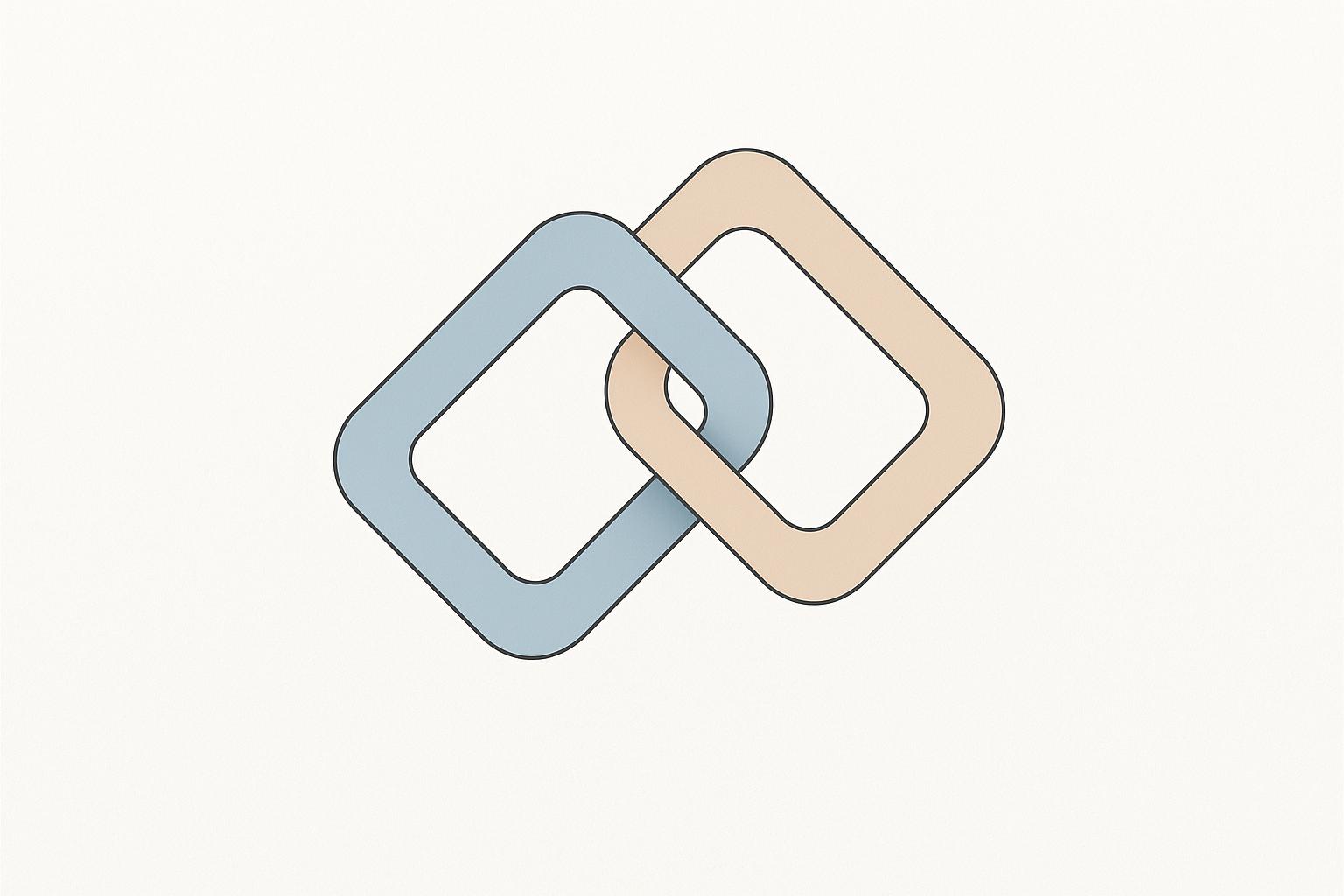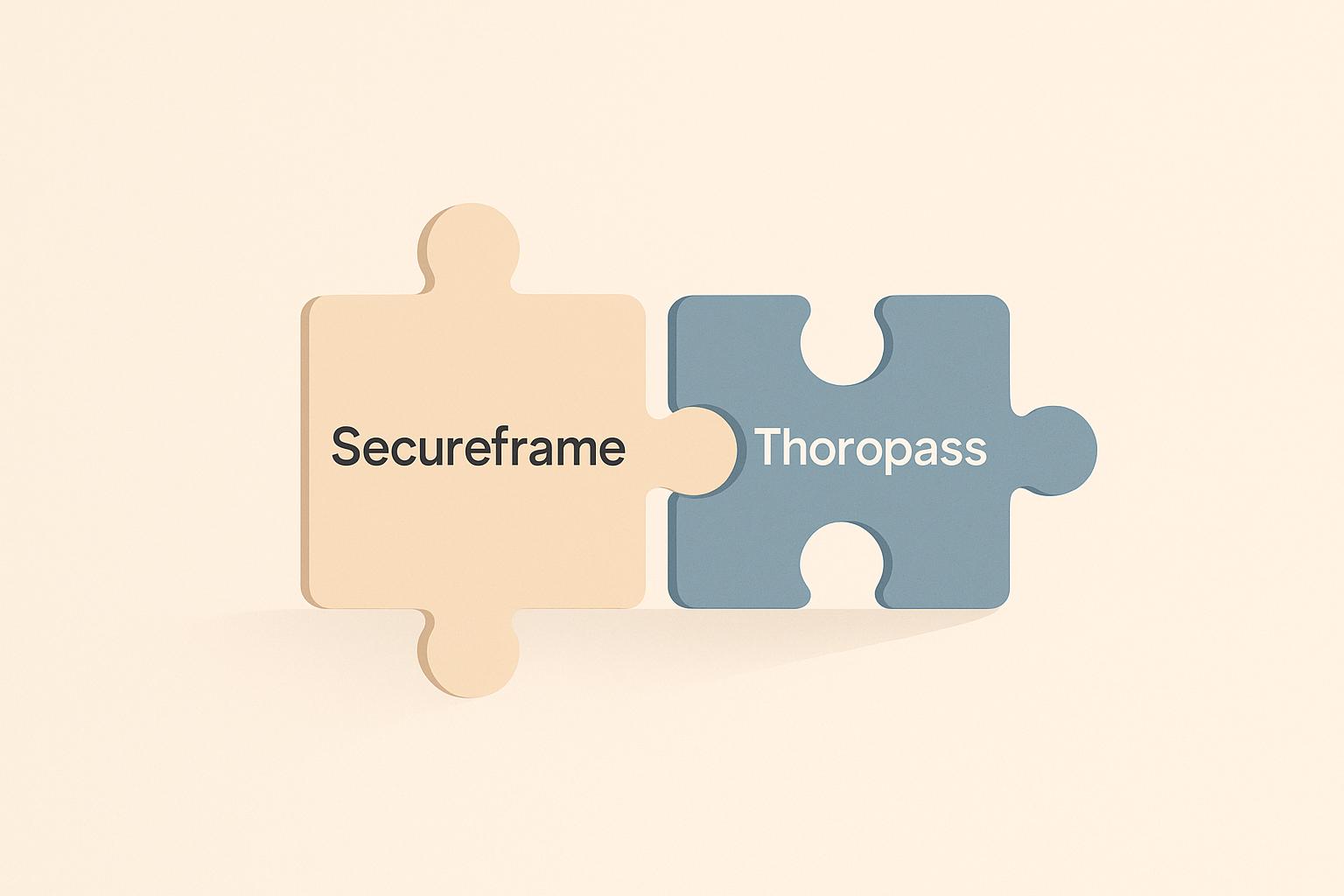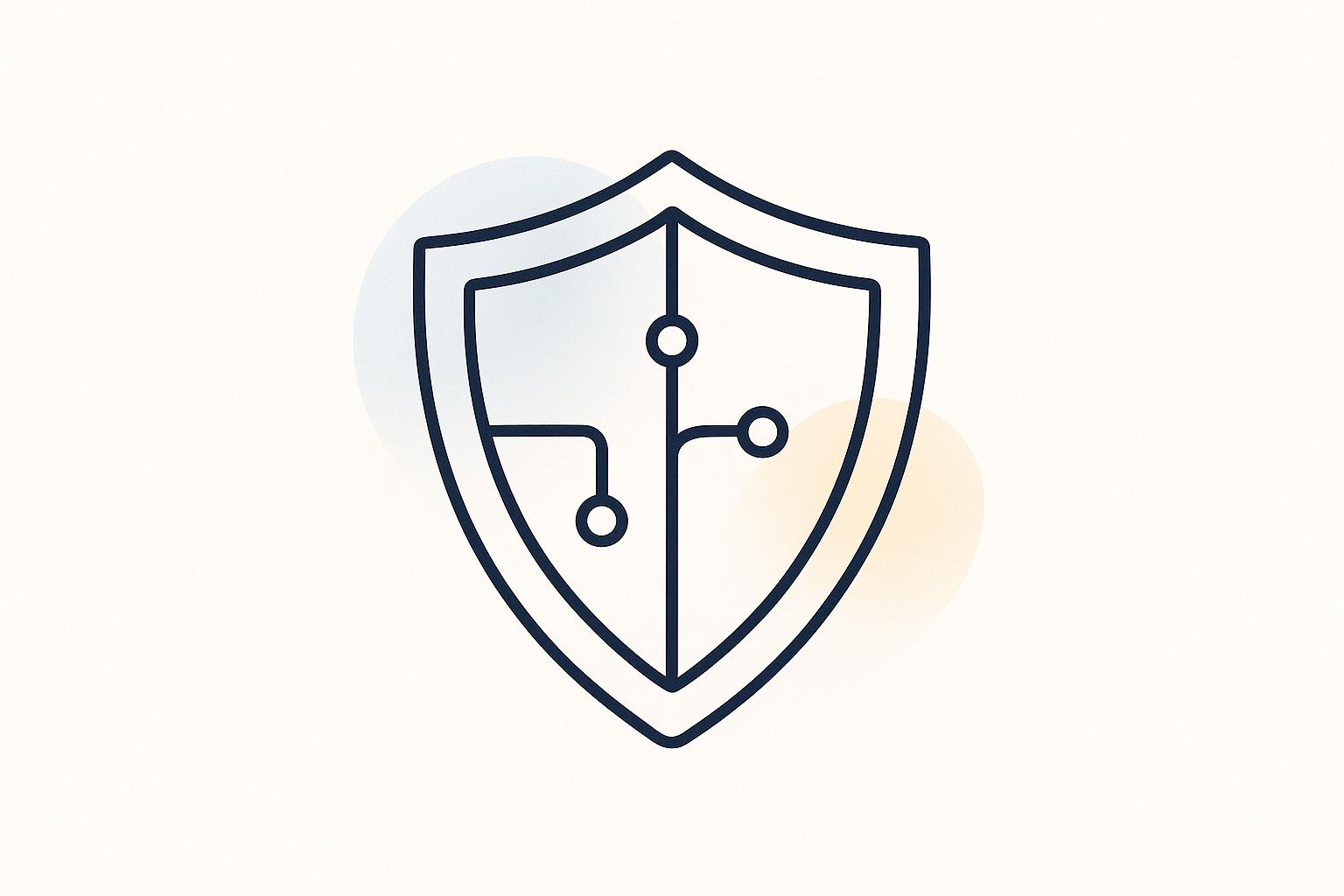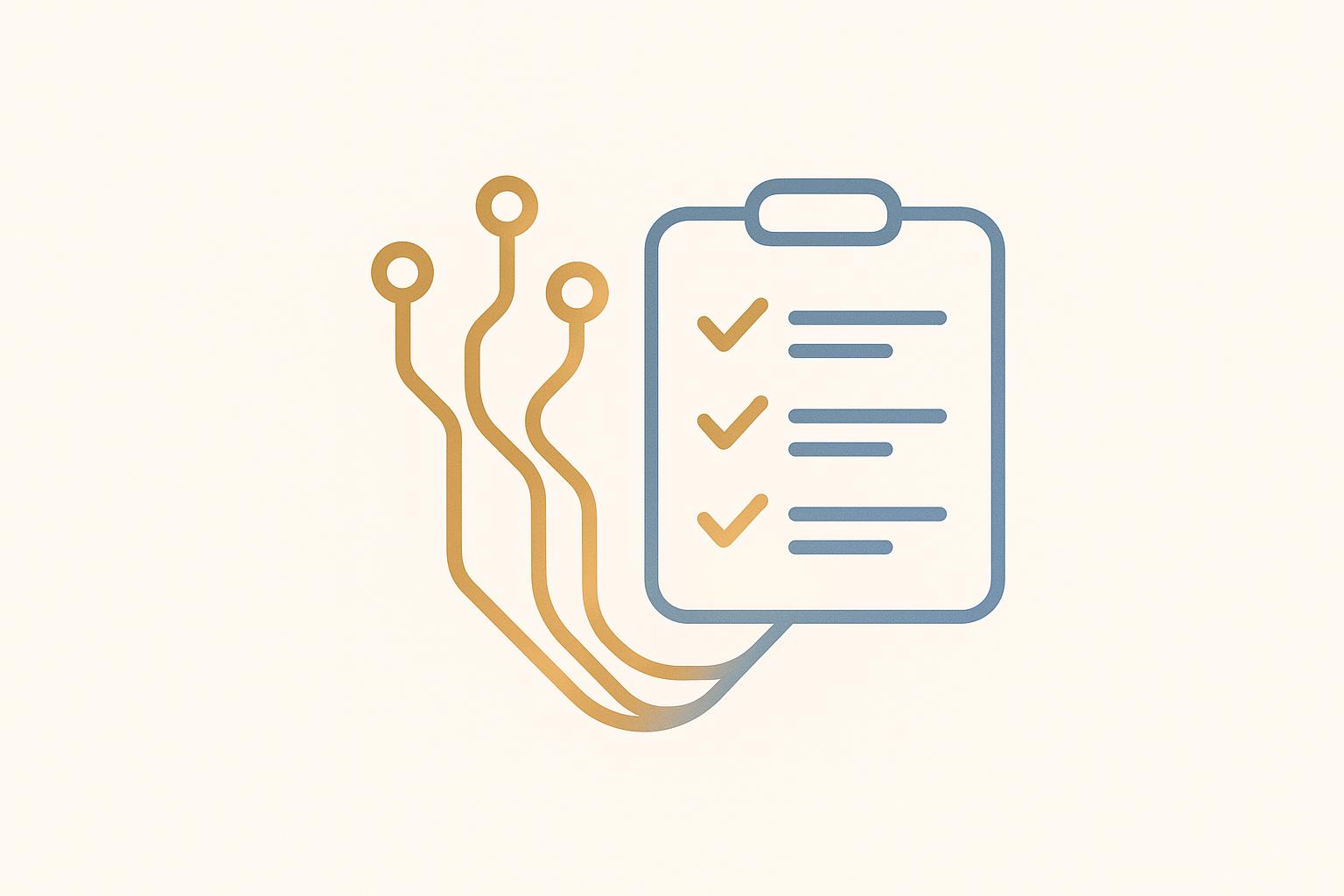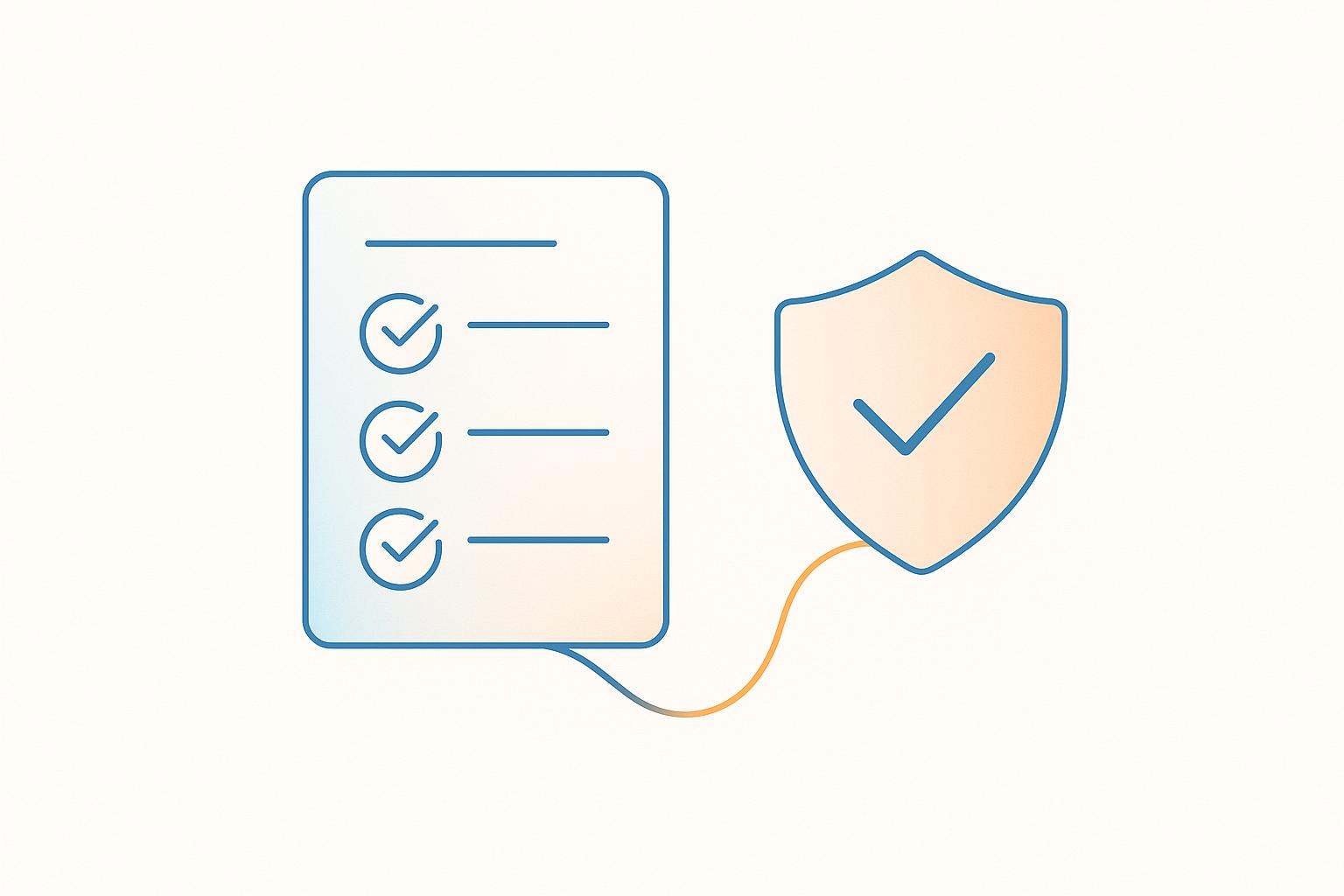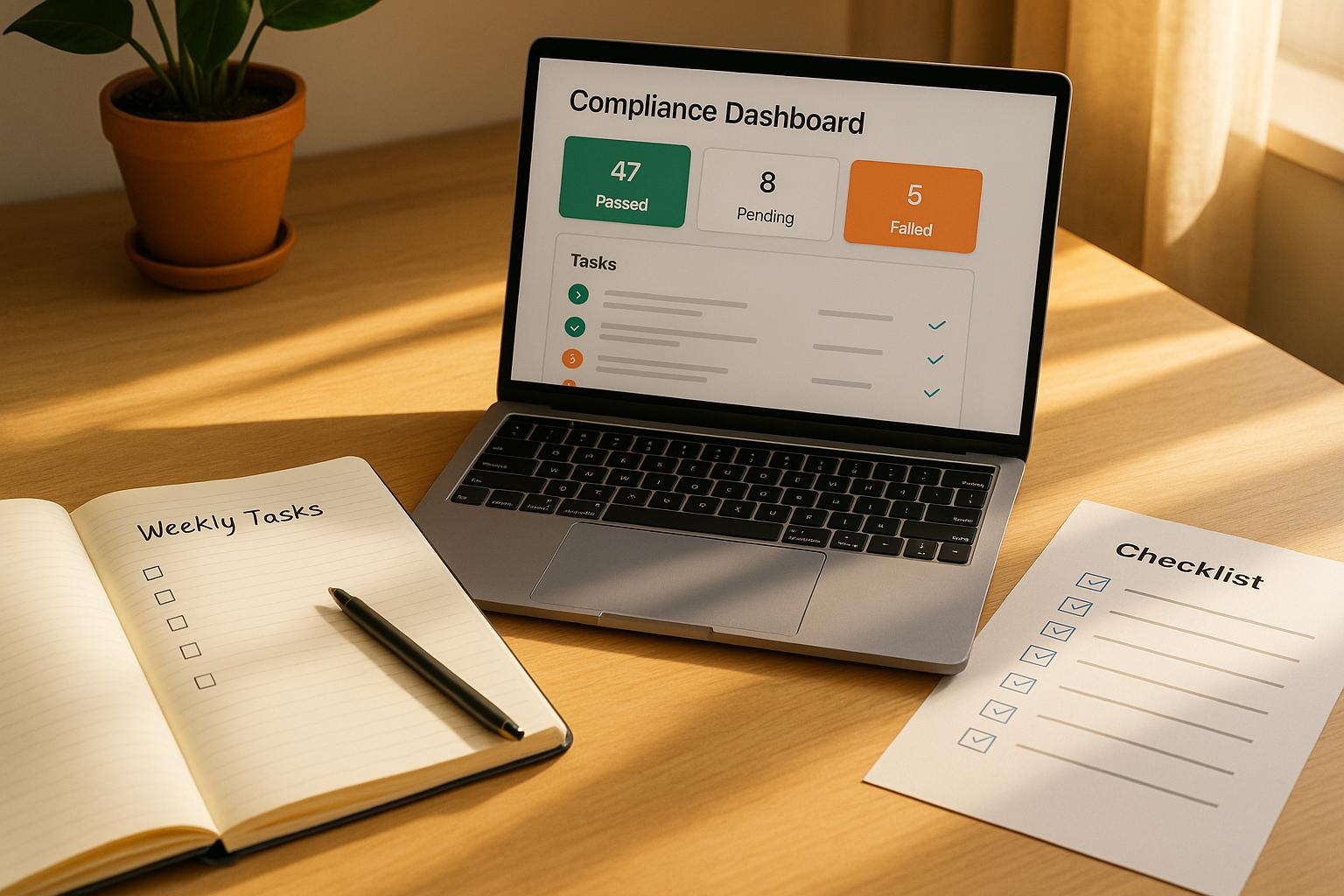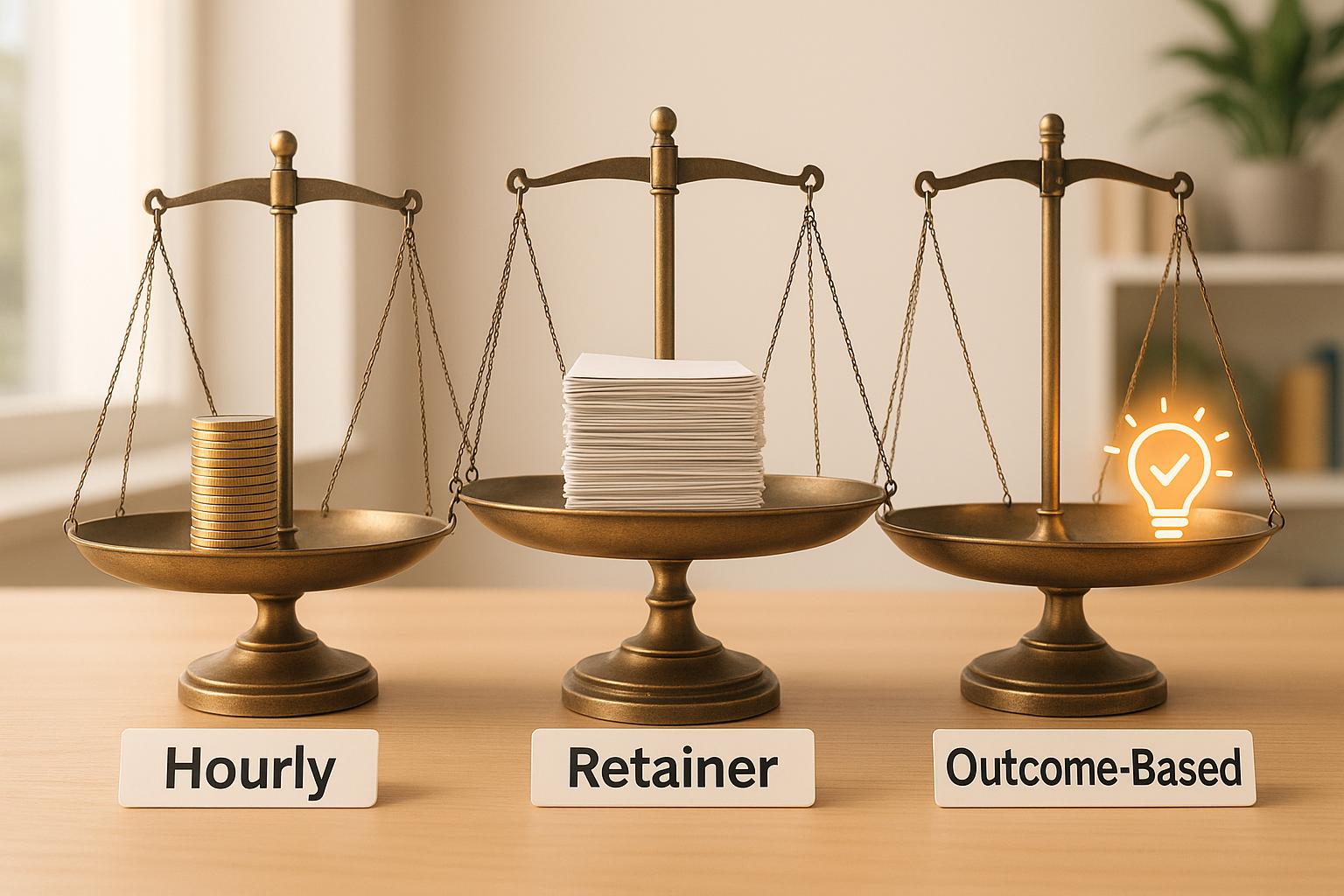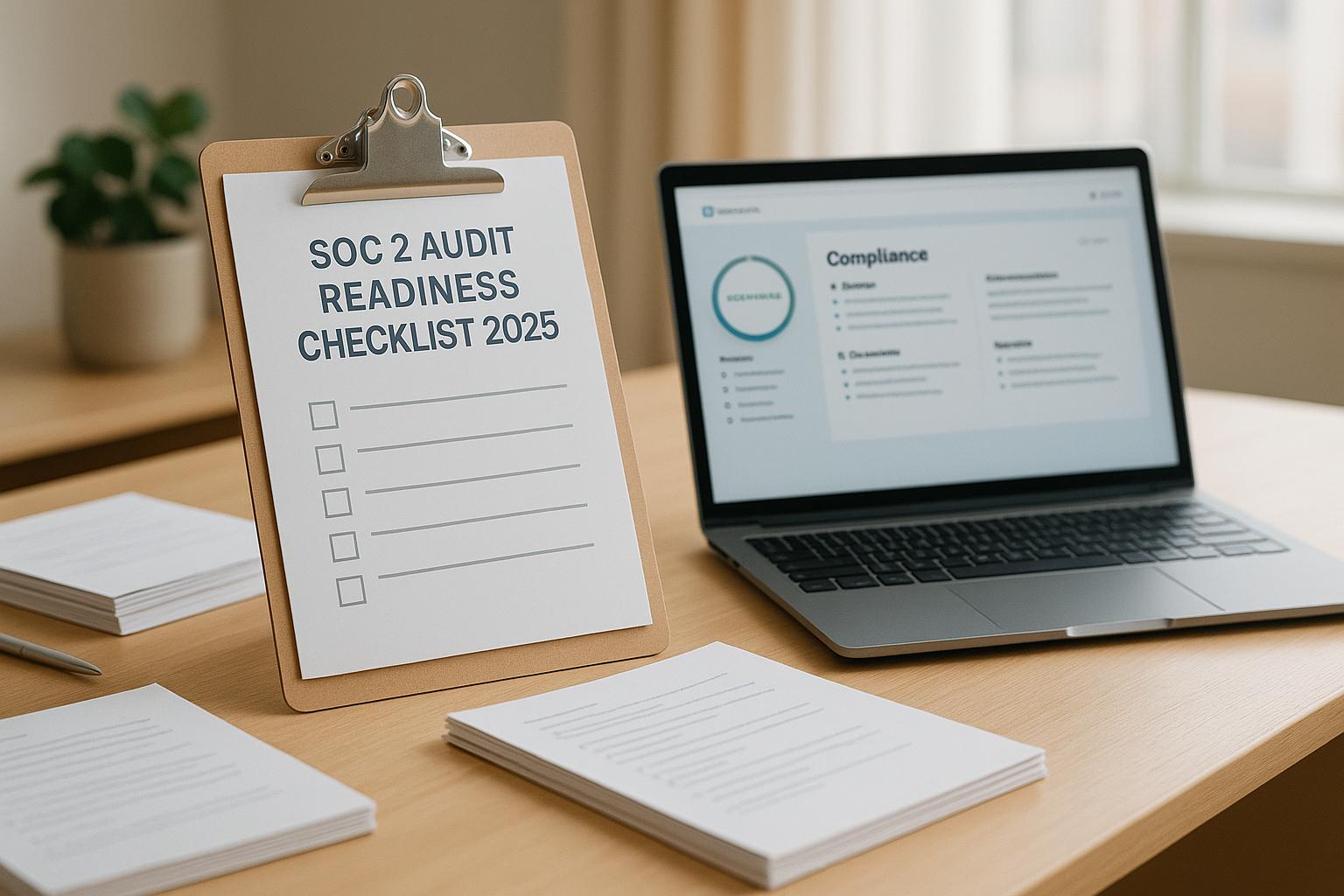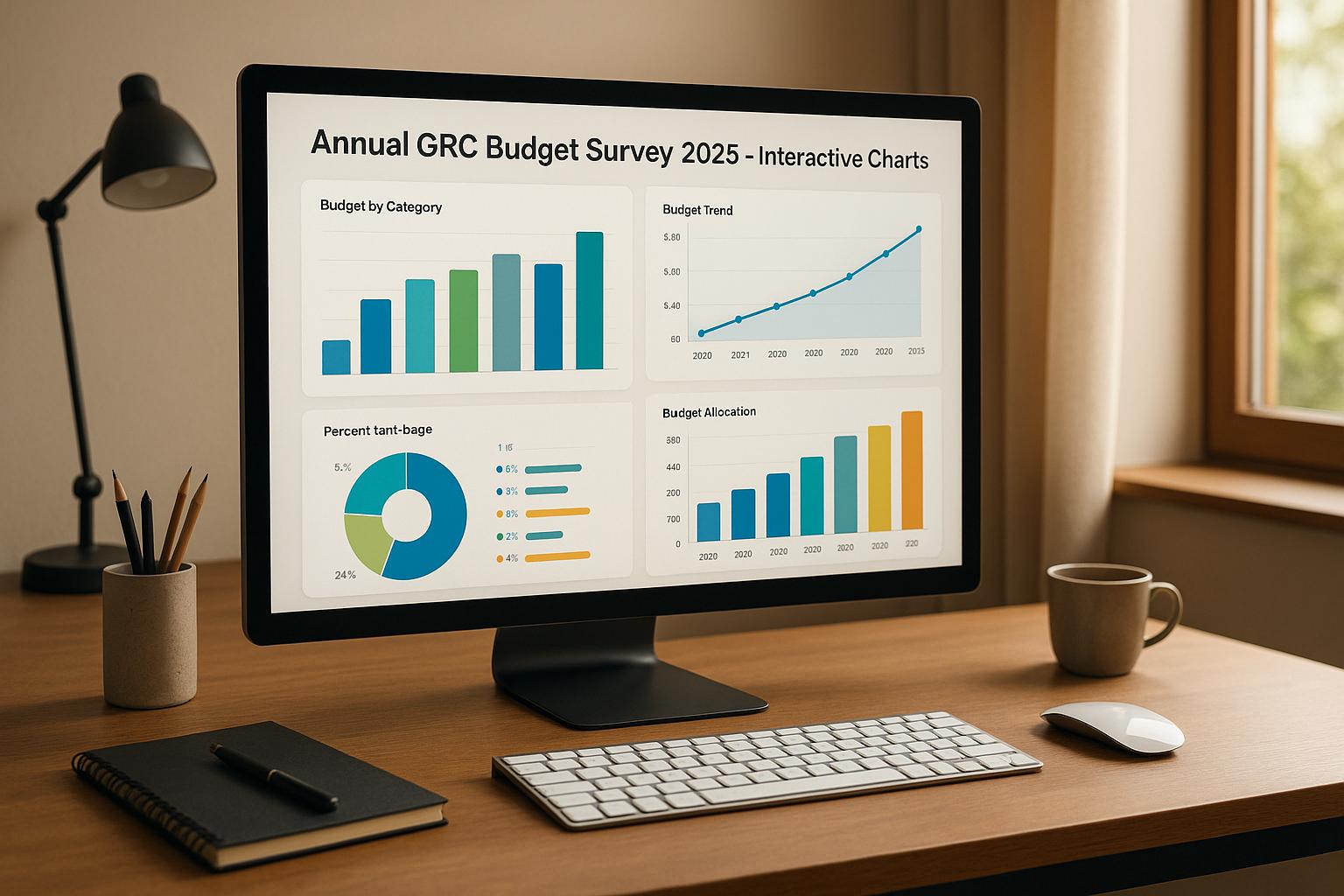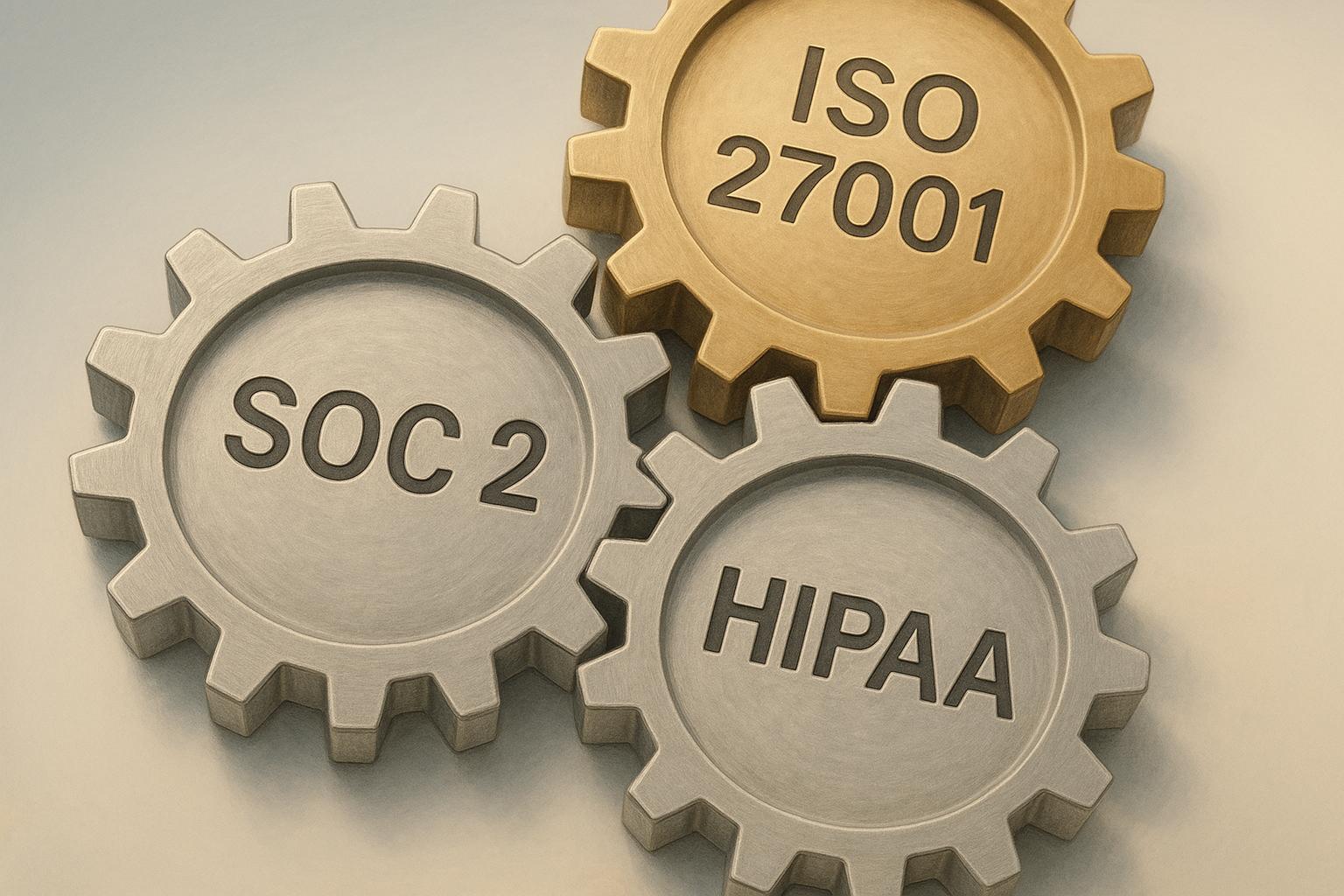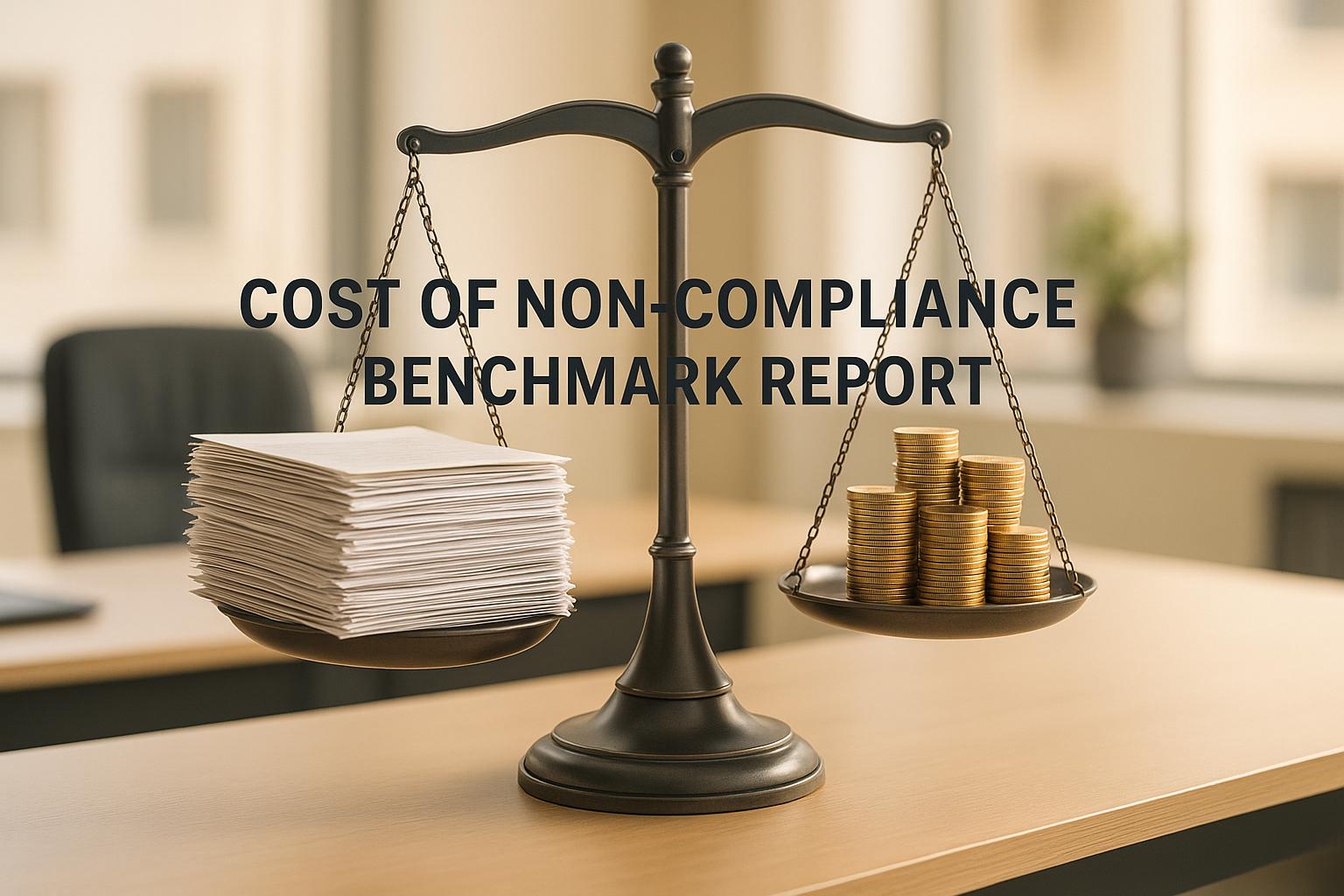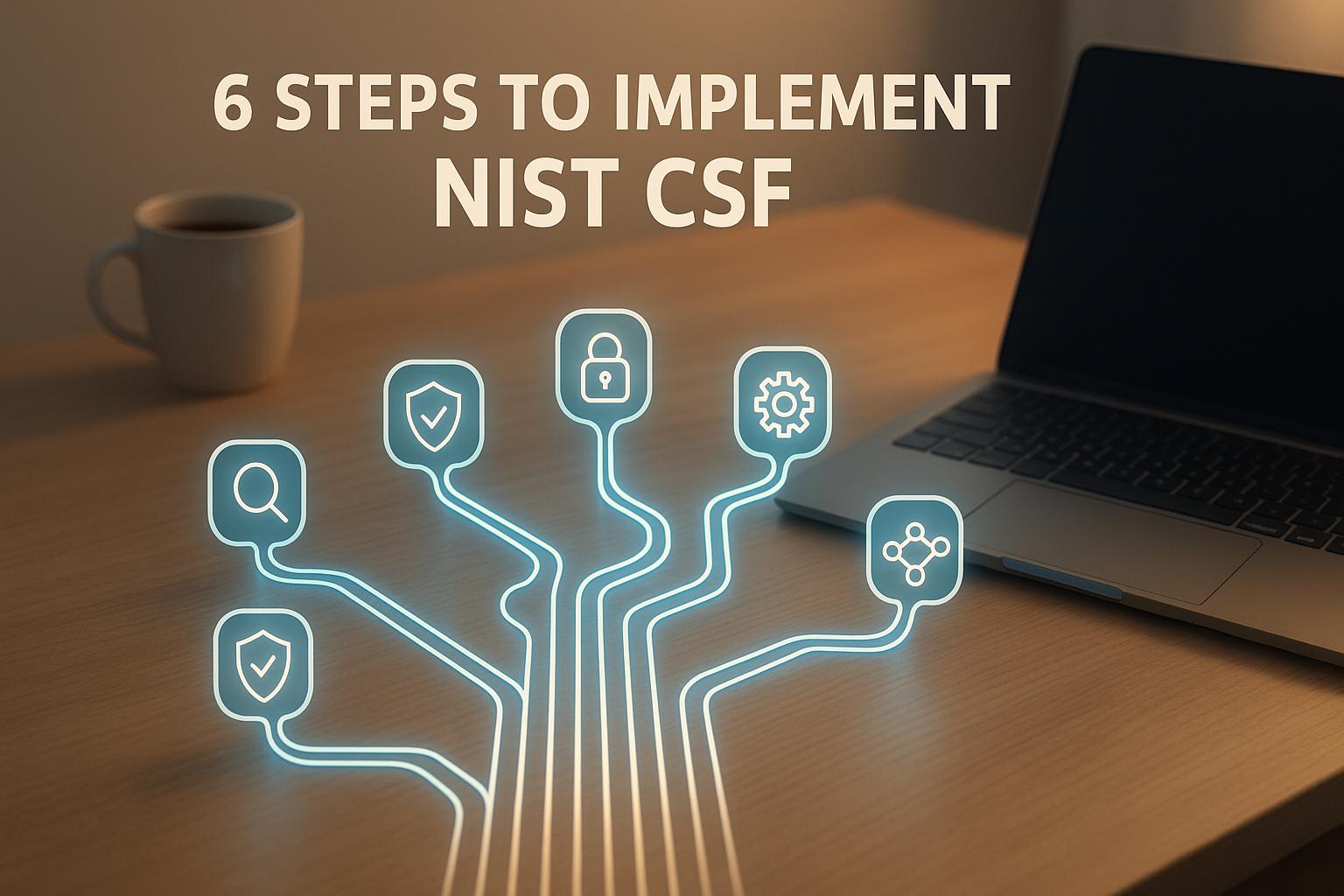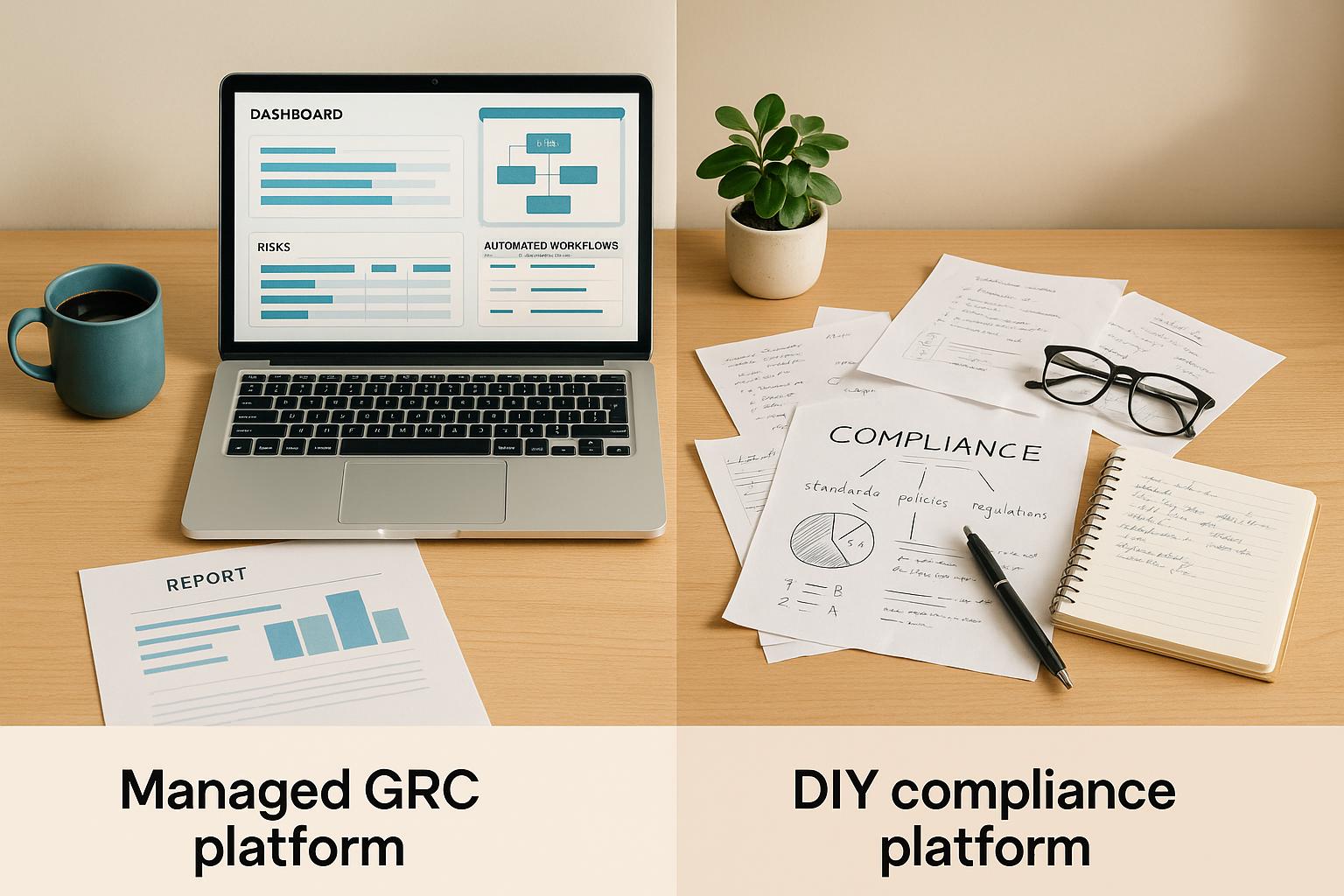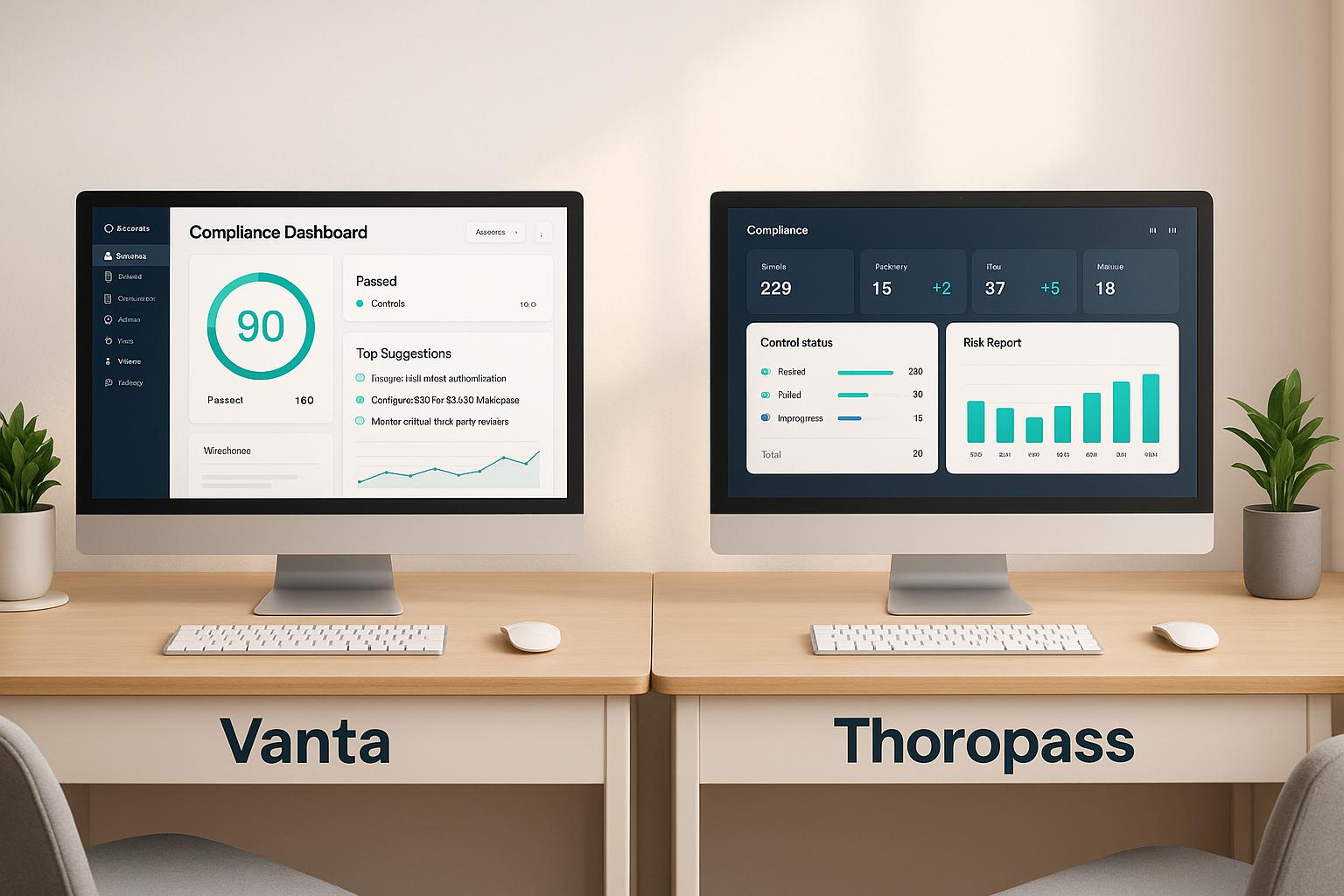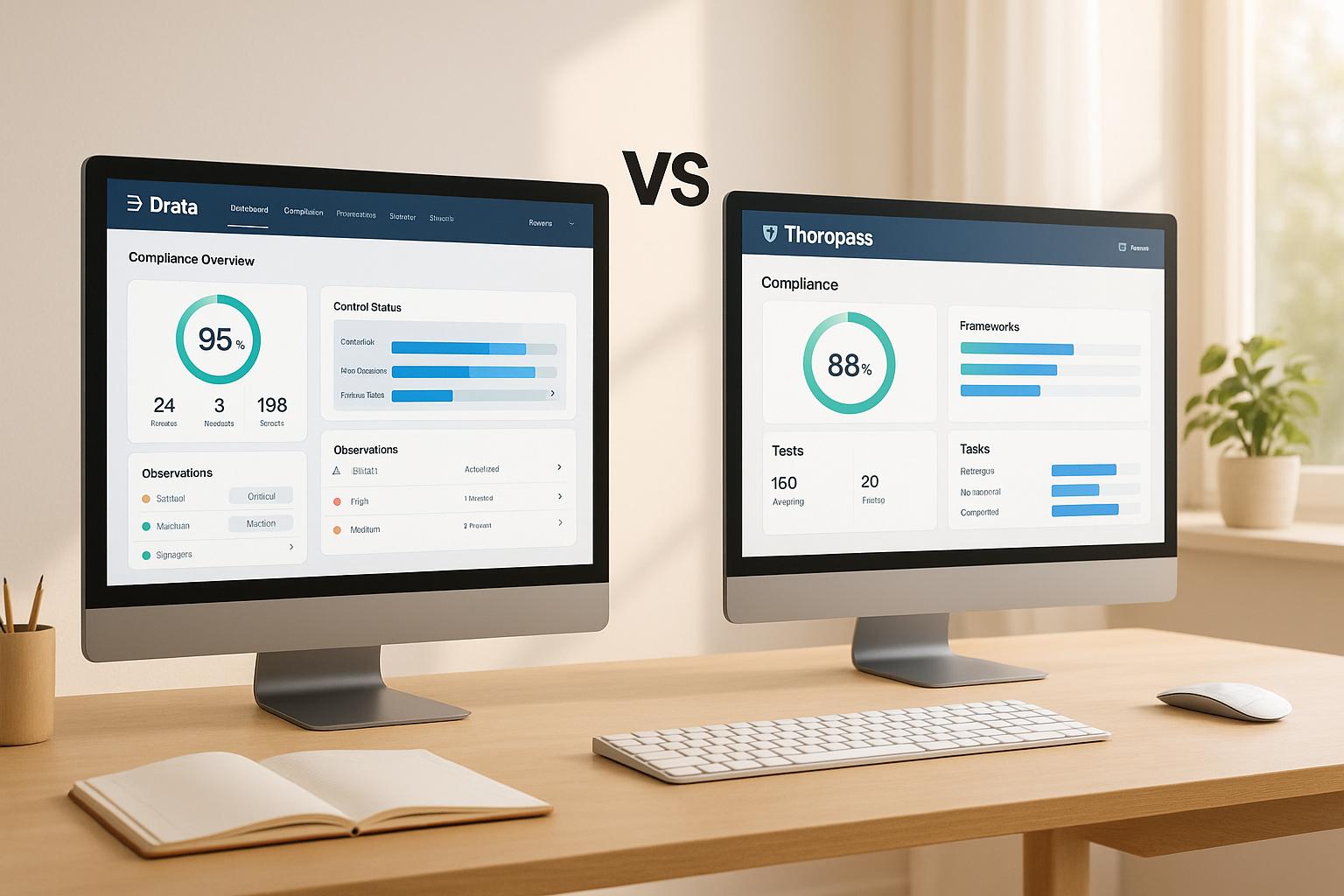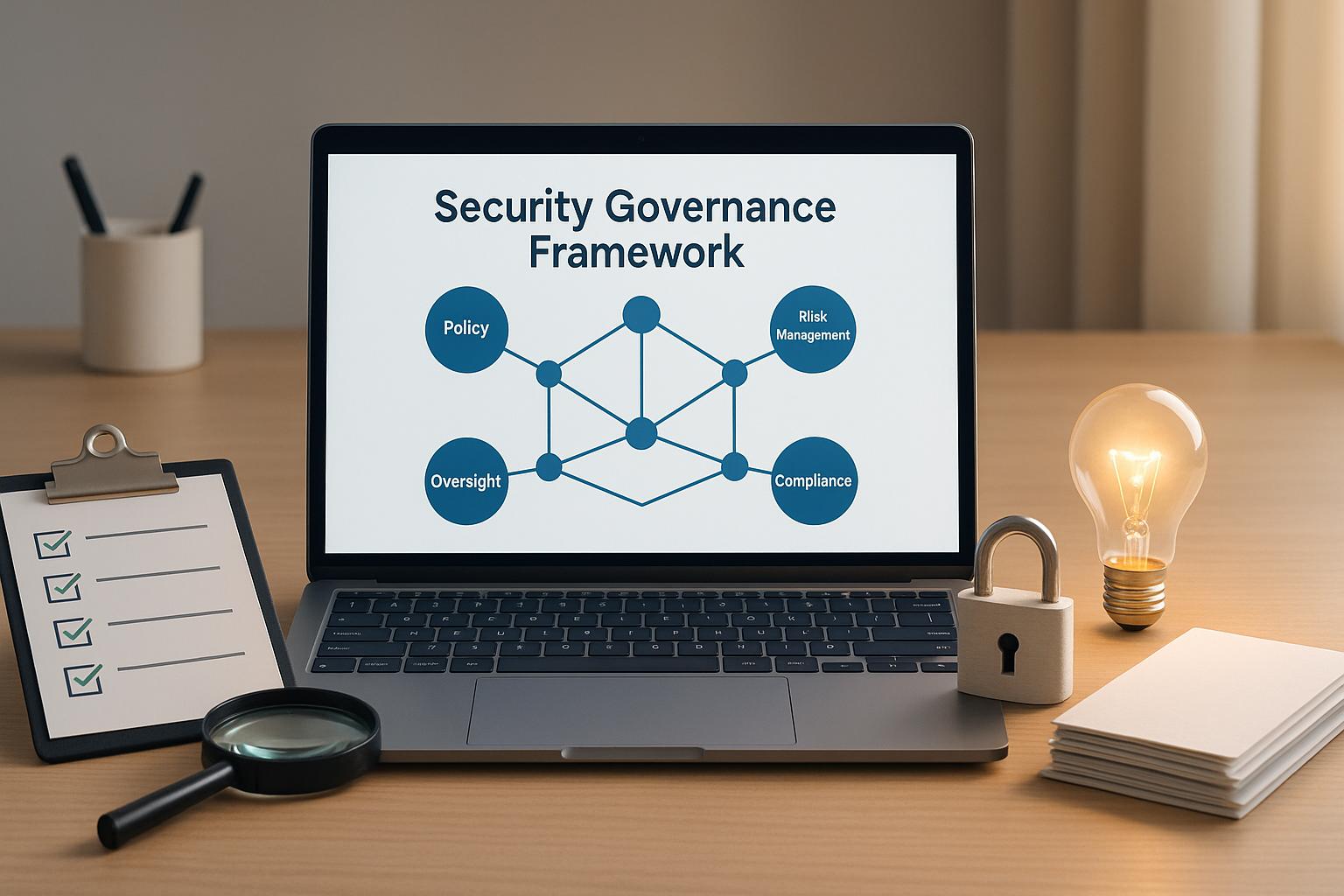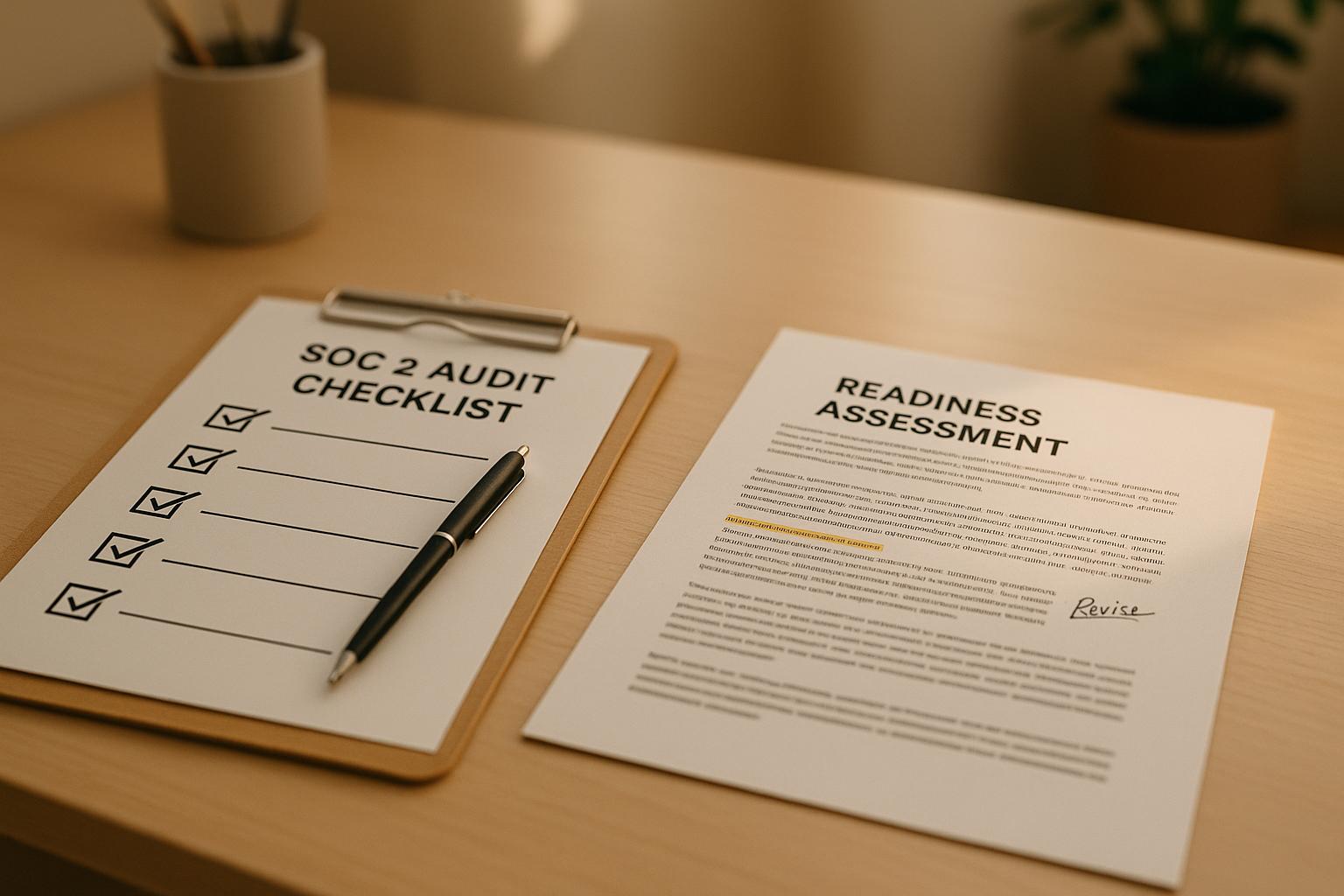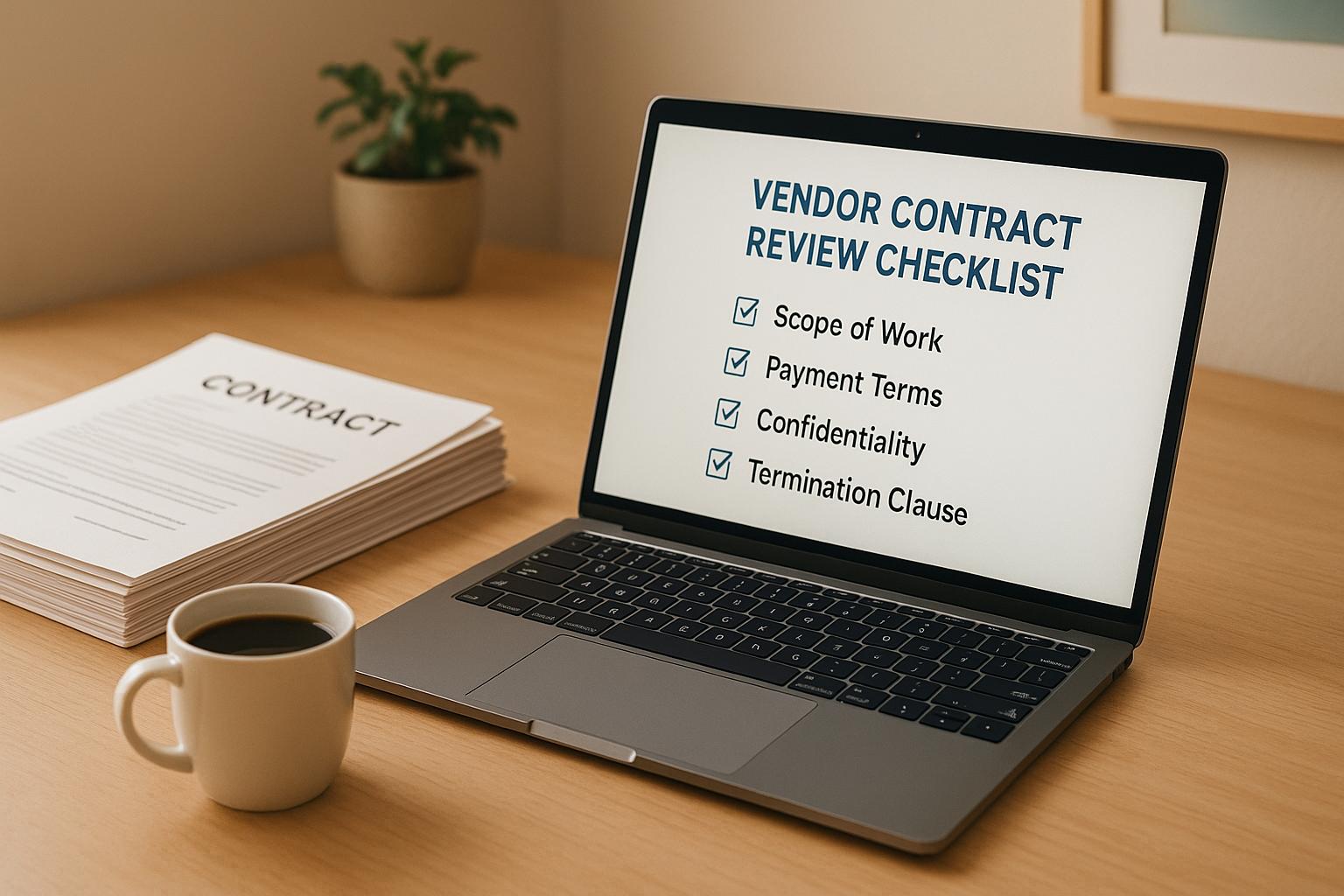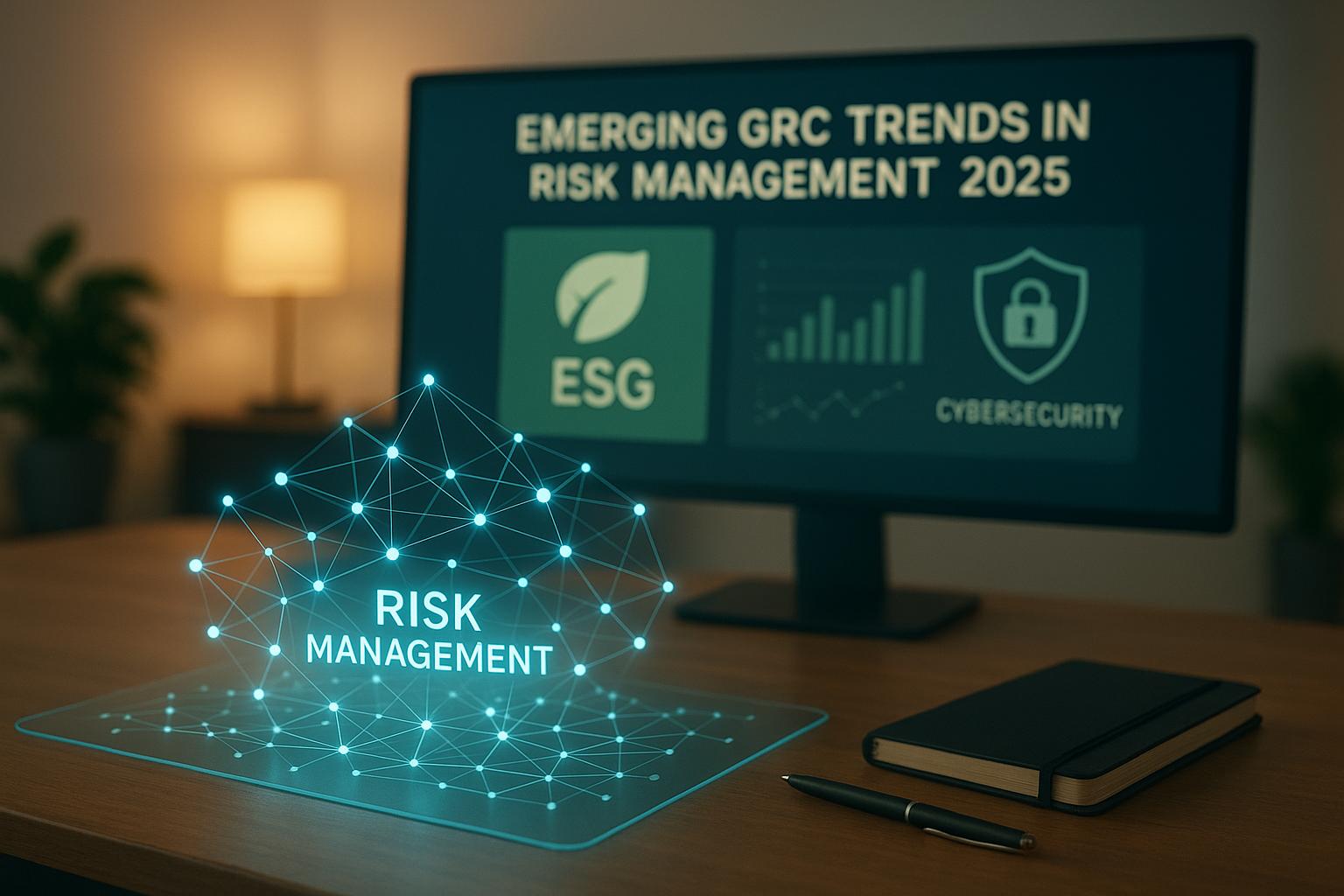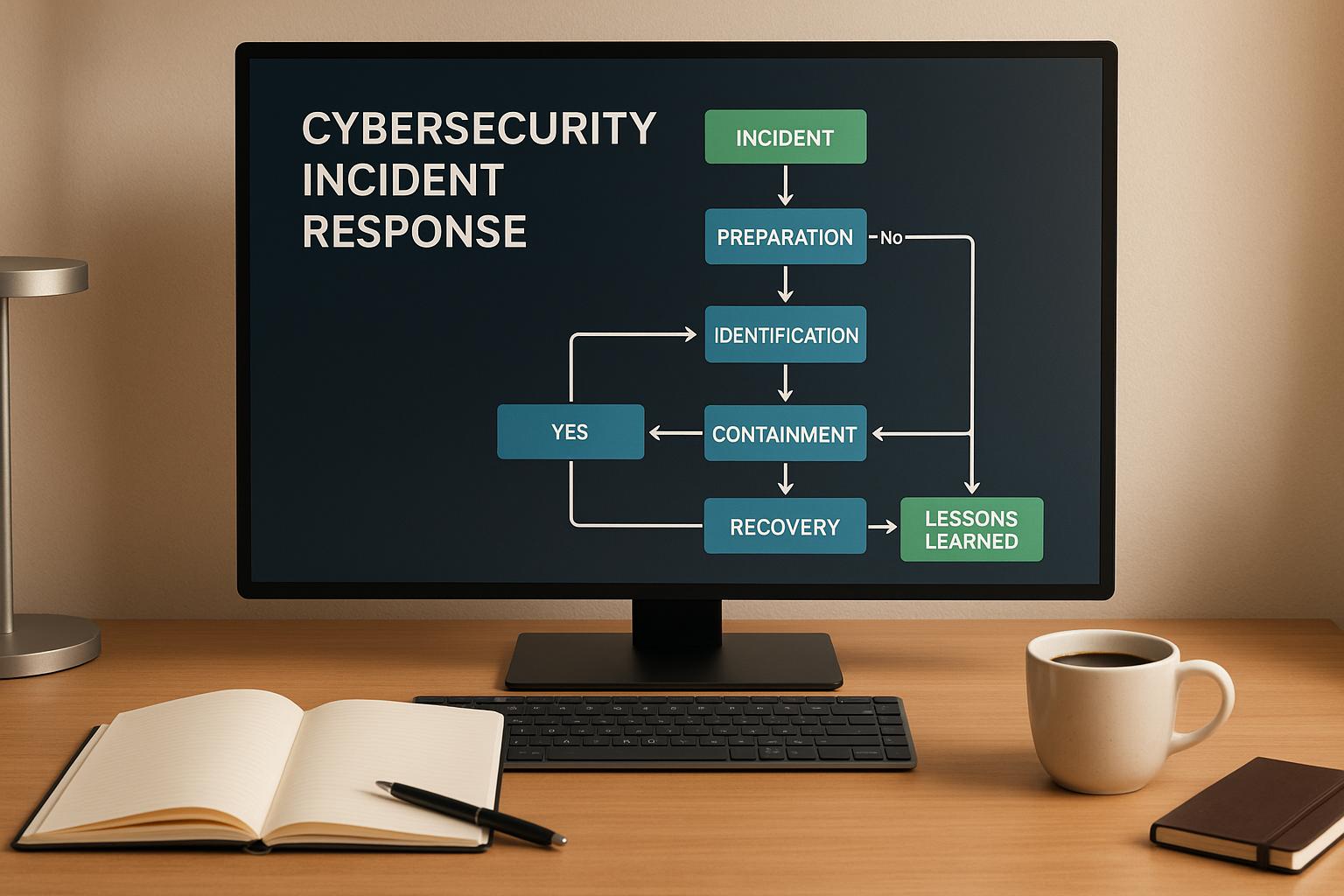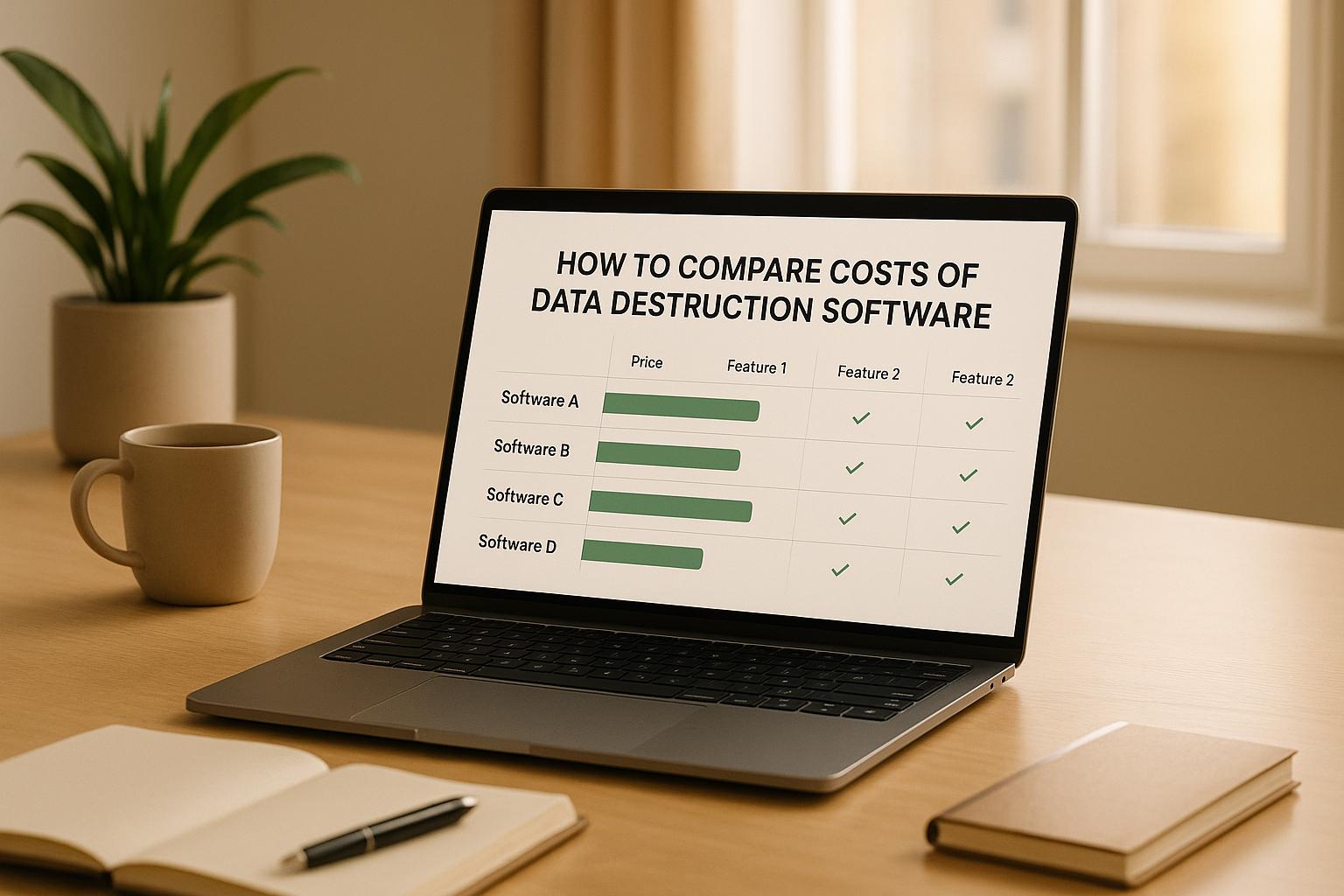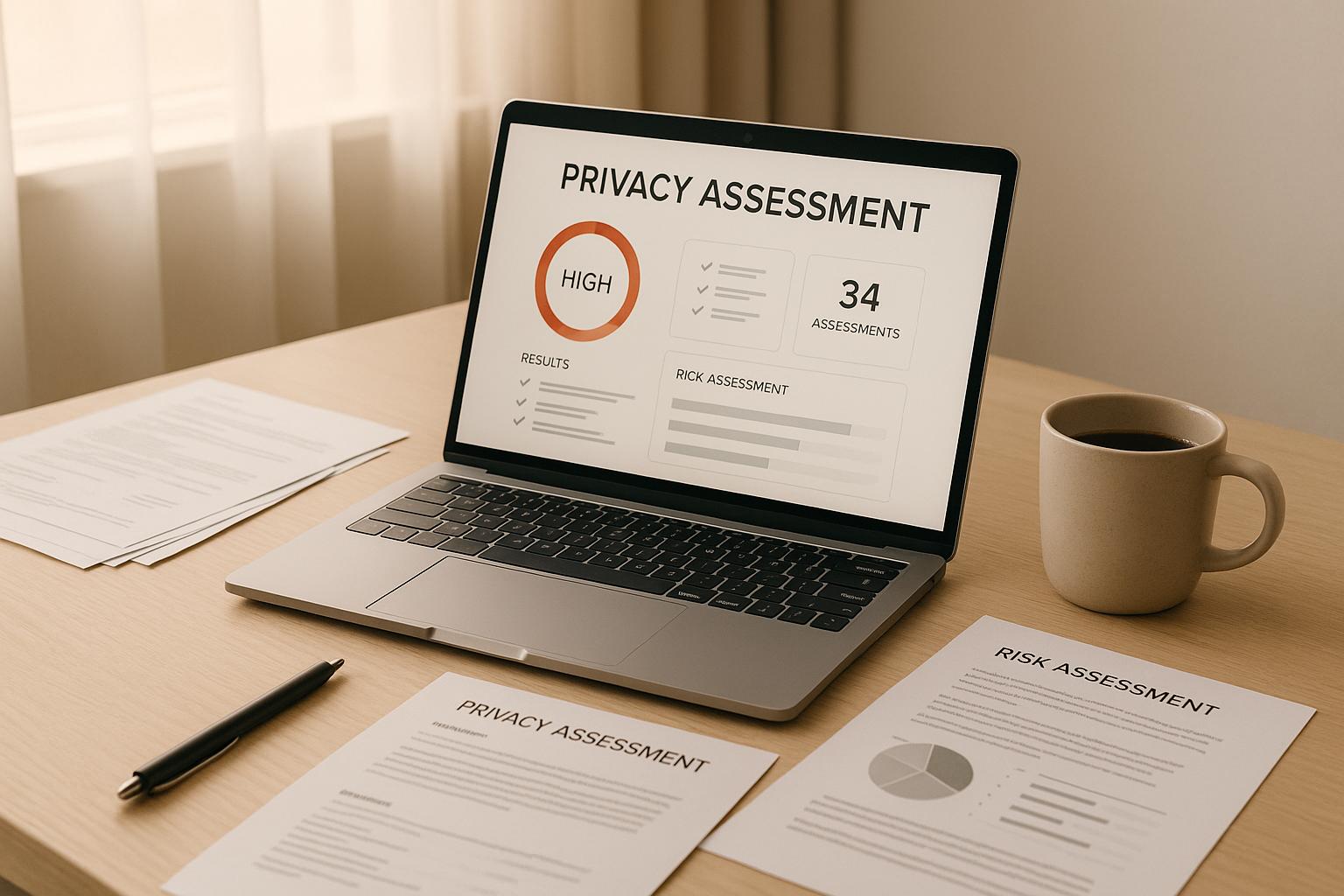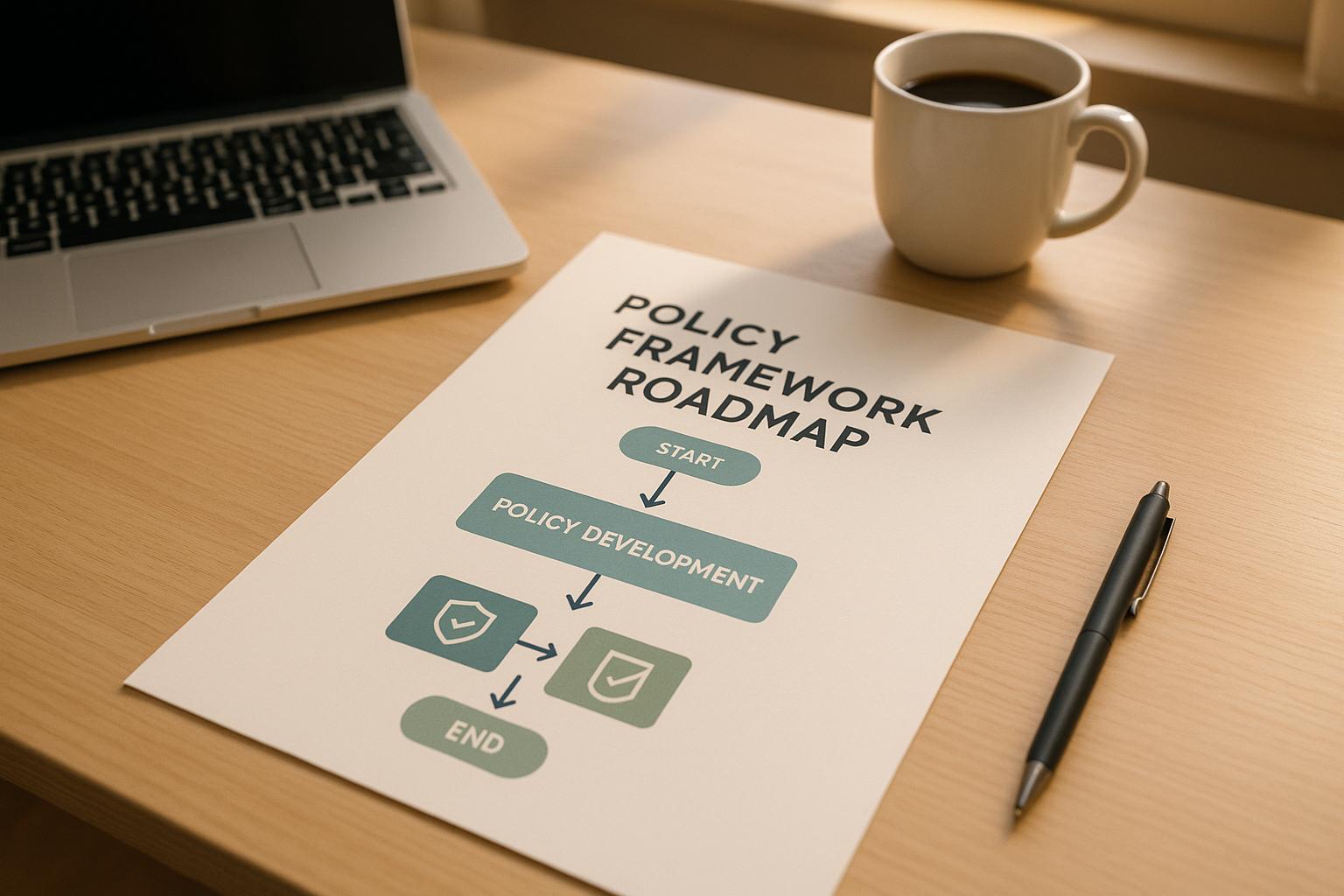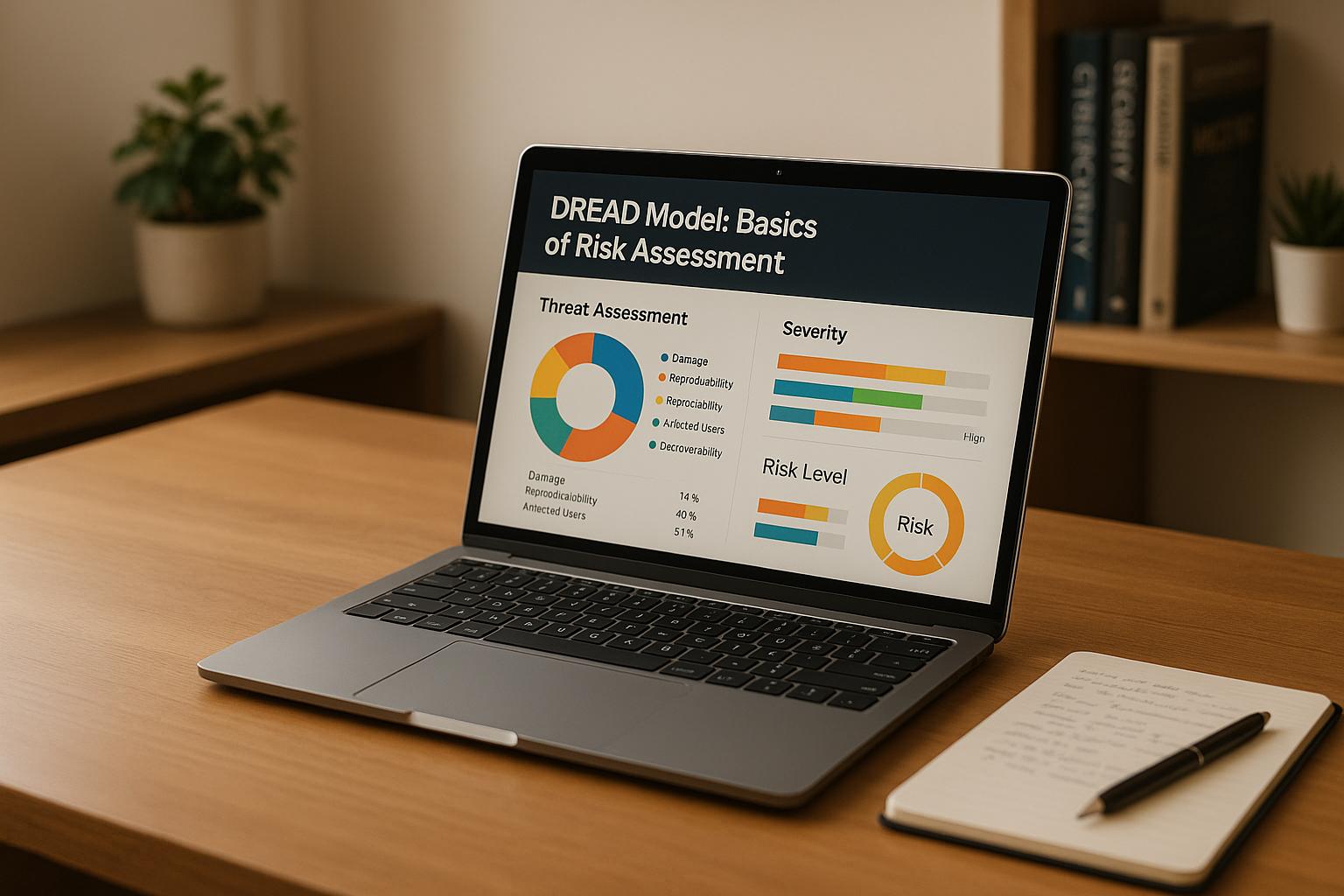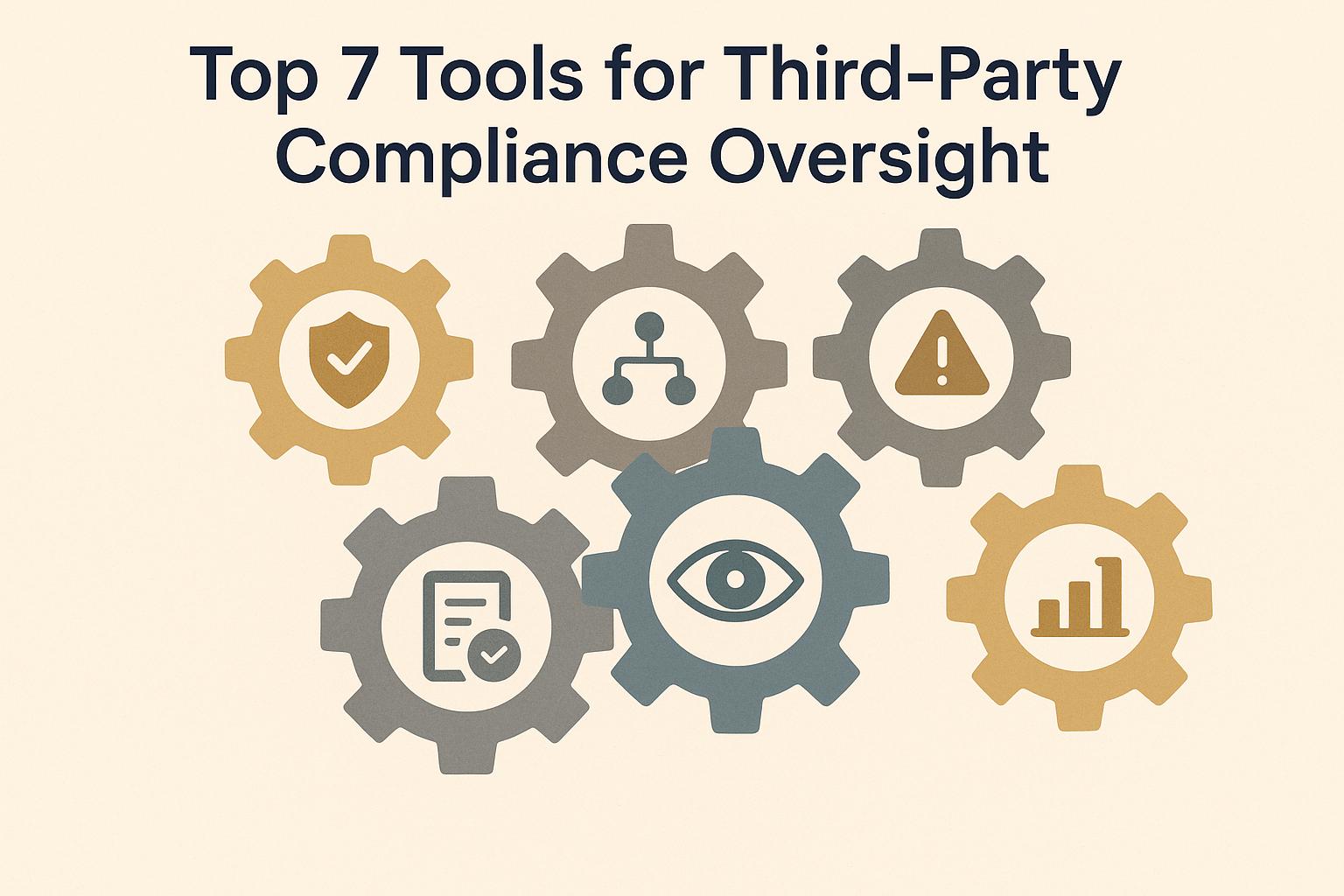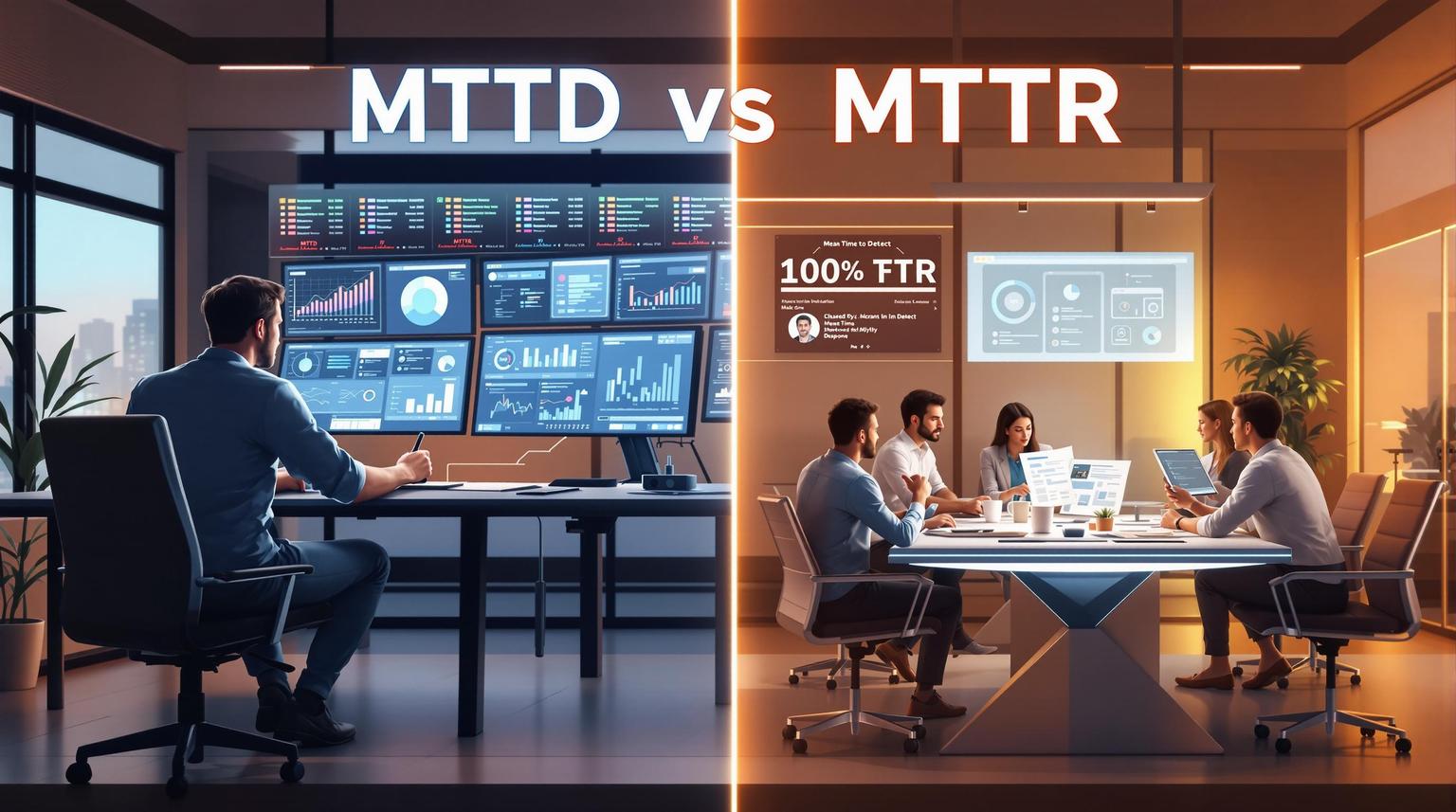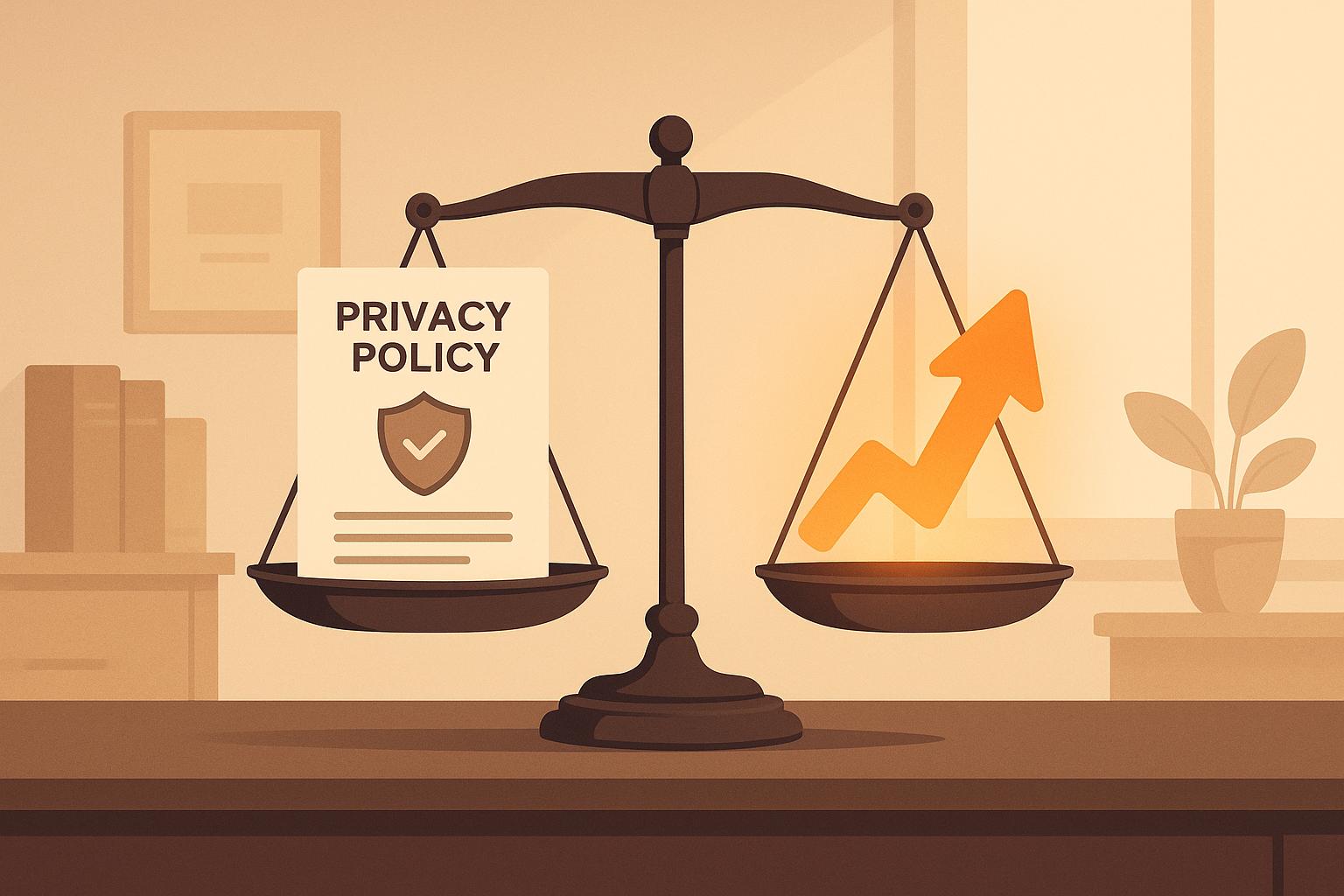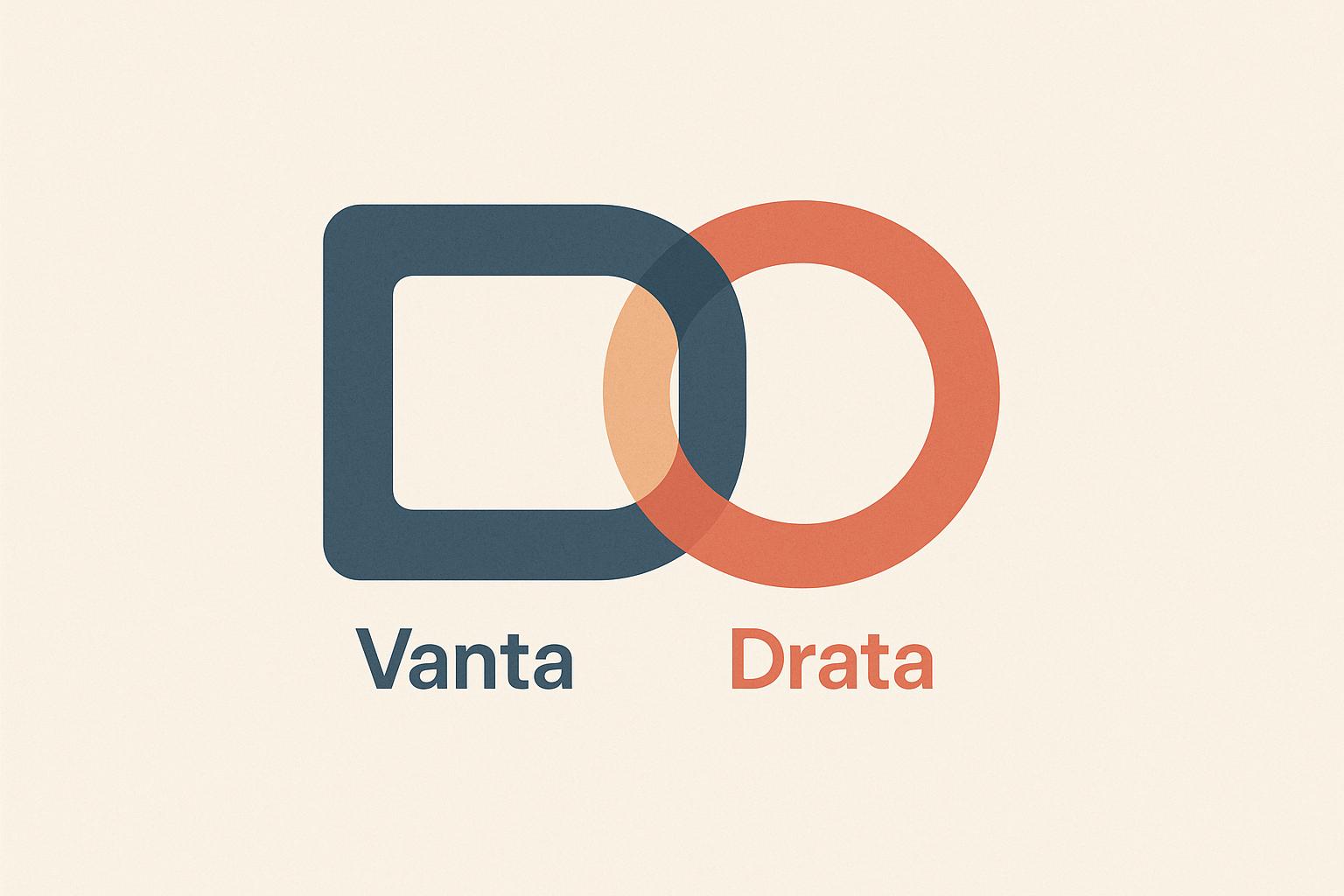
Choosing between Vanta and Drata boils down to your business's size, compliance needs, and operational complexity. Both platforms simplify compliance processes for frameworks like SOC 2, ISO 27001, HIPAA, and GDPR, but they cater to different priorities:
- Vanta focuses on real-time monitoring and ease of use. It offers over 400 integrations, making it ideal for smaller teams or startups needing quick and straightforward compliance solutions.
- Drata emphasizes customization and detailed control, with 250+ integrations and advanced tools for larger enterprises with complex workflows.
Here’s a quick comparison:
| Feature | Vanta | Drata |
|---|---|---|
| Integrations | 400+ (broad coverage) | 250+ (deeper focus on specific tools) |
| Interface | Clean, user-friendly | More detailed, in-app support |
| Support | Portal-based, responsive | Live chat, email, onboarding experts |
| Best For | Startups, small teams | Larger enterprises, complex needs |
Key Takeaway: If you need simplicity and speed, Vanta is a great fit. For more customization and tailored workflows, Drata is the better choice.
Feature Comparison
Let’s dive into the key features of each platform and see how they stack up.
Supported Compliance Frameworks
Both platforms excel in supporting the major compliance frameworks discussed earlier. However, the ability to integrate effectively with other tools is just as important for streamlining compliance automation.
Third-Party Integrations
When it comes to integrations, these platforms take different approaches to stand out. Vanta boasts an impressive catalog of over 400 integrations, which include more than 40 AWS resources, 30+ Azure resources, and 25+ Google Cloud Platform resources. These integrations help simplify tasks like evidence collection and configuration monitoring.
On the other hand, Drata offers 250+ native connections, with a strong focus on areas like identity management, endpoint security, and vulnerability management. Both platforms also allow for custom integrations via their APIs. Vanta’s API is geared toward broader automation needs, while Drata’s API is tailored for data querying, uploading evidence, and creating custom workflows.
User Experience and Support
The day-to-day use of a compliance platform - and the support you receive when challenges arise - plays a huge role in shaping your compliance journey. Both Vanta and Drata bring their own strengths to the table when it comes to interface design and customer support.
Interface and Usability
Vanta offers a clean, easy-to-navigate interface paired with a detailed knowledge base. However, its support is primarily accessed through a portal, which means there's no direct in-app assistance available.
Drata, on the other hand, integrates customer support directly into the platform. This means users can connect with compliance experts without leaving their workflow, making the process more seamless. The platform also provides robust online documentation, and users frequently commend Drata's proactive and structured approach to customer assistance.
These differences in how support is accessed reflect broader strategies in customer assistance.
Customer Support Options
The two platforms take notably different approaches to customer support. Drata offers live chat, email support, dedicated onboarding specialists, and thorough documentation. It has earned a strong reputation for being responsive and helpful.
"Guided onboarding and responsive expert support created the partnership we were missing."
– Head of Operations, EdTech
Meanwhile, Vanta boasts a 95.5 customer satisfaction score and provides access to knowledgeable teams for both technical and compliance-related questions. Users often highlight its fast and effective support throughout the compliance process. That said, some have noted delays and found the portal-based system less convenient compared to Drata's in-app support.
"We switched from Drata to Vanta because of the customer service. Vanta's responsiveness from the support side and dedication from our Customer Success Manager helped us navigate complicated InfoSec documents and security questionnaires."
– Manmit Shrimali, Co-founder, Turing Labs Inc.
The onboarding process further highlights the differences in how these platforms approach user support.
Setup and Deployment Time
Getting up and running quickly is critical for maintaining compliance momentum. Both Vanta and Drata enable rapid deployment, but they do so in different ways. Vanta leans on its extensive knowledge base and prompt support for self-service setup, while Drata provides hands-on guidance through dedicated onboarding specialists who often anticipate user needs.
The distinction lies in their philosophies: Vanta emphasizes empowering users with tools for self-service, while Drata focuses on a more guided, hands-on approach. Your team's preference for independence or direct support will likely determine which platform feels like a better fit.
Pricing and Value
When it comes to planning budgets and scaling operations, understanding the costs of compliance platforms is crucial. Both Vanta and Drata use tiered pricing models that adjust based on the size of the organization, the frameworks supported, and the features included.
Pricing Structure
The tiered pricing approach allows each platform to cater to a range of compliance needs. Entry-level plans typically cover basic compliance features and integrations, while higher-tier options include more advanced capabilities and dedicated support. Costs often depend on factors like the number of users, the range of compliance frameworks supported, and any specific organizational requirements. Most platforms operate on annual subscription plans, though some may offer monthly options at adjusted rates. For larger enterprises, custom quotes are often provided to address unique needs. This pricing model means the overall value of a platform can vary significantly, going beyond just the base subscription fee.
Cost vs. Features Analysis
Evaluating a platform's value involves more than just looking at the subscription price. Features like onboarding support, detailed documentation, and scalability can significantly impact the overall cost-effectiveness. For example, a thorough onboarding process may help organizations achieve compliance faster, potentially saving on internal implementation costs. Similarly, modular pricing options allow larger businesses to pay only for the features they actually need. In the end, the return on investment depends on how well the platform's pricing and features align with an organization's specific compliance goals and operational priorities.
Since pricing and features can change, it’s always a good idea to contact each vendor directly for the most accurate and up-to-date details.
sbb-itb-ec1727d
Pros and Cons Comparison
Here's a side-by-side look at the strengths, limitations, and ideal scenarios for each platform:
| Aspect | Vanta | Drata |
|---|---|---|
| Strengths | - Simple, user-friendly interface that makes compliance setup quick and easy. | - Highly customizable platform offering detailed control over compliance processes. |
| Limitations | - Can be more expensive for smaller businesses and may have fewer customization options in certain plans. | - Typically involves a more complex setup process and may require ongoing technical support to keep everything running smoothly. |
| Best For | Companies looking for a fast, hassle-free compliance solution that’s easy to navigate. | Larger enterprises or businesses needing detailed customization and flexibility for intricate compliance workflows. |
This breakdown provides a clear perspective to help U.S. organizations choose the platform that best aligns with their needs.
Recommendations for U.S. Organizations
When it comes to selecting between Vanta and Drata, U.S. organizations should weigh their decision based on factors like company size, available technical resources, and where they currently stand in their compliance journey. For smaller organizations or those lacking in-house compliance expertise, a platform that offers guided setups, streamlined processes, and automated evidence collection can be a game-changer. These features can simplify the path to compliance, making the process faster and less burdensome.
On the other hand, companies with established IT processes and a need to navigate evolving regulations may benefit from platforms offering flexible workflows and advanced customization. Enterprises with complex operational structures or diverse technology environments might prioritize solutions that deliver granular controls and detailed reporting to meet the needs of both internal teams and external audits.
It's also essential to ensure the platform integrates smoothly with your existing systems - whether cloud-based, productivity tools, or industry-specific software. This compatibility can make evidence collection and monitoring more efficient.
Additionally, scalability and long-term support should not be overlooked. As your organization grows, the platform should accommodate that growth without becoming a financial or operational burden. Consider the total cost, including setup, ongoing maintenance, and training. For those working with external compliance consultants or managed service providers, selecting a platform that aligns with your broader support strategy can make implementation and ongoing management significantly easier.
Conclusion
Vanta and Drata stand out as top contenders in the compliance automation market, which is on track to expand from $2.94 billion in 2024 to $13.4 billion by 2034. Both platforms aim to simplify compliance processes and minimize manual effort, but they cater to different organizational needs and stages of growth.
Here's a quick breakdown: Vanta is ideal for startups and smaller teams, offering broad integrations, continuous monitoring, and automation powered by AI that can slash up to 90% of manual evidence collection. On the other hand, Drata shines for larger, scaling enterprises with its "compliance-as-code" approach, advanced risk management tools, and its Audit Hub, which provides the detailed control needed for complex operations. While Drata’s integrations are fewer, they are often deeper and more tailored for developer tools and cloud services.
If your priority is fast, user-friendly automation, Vanta might be the better fit. For organizations needing detailed control and extensive customization, Drata could be the way to go.
When deciding, think about your current technical capabilities, the complexity of your operations, and your growth plans. Both platforms deliver strong returns by reducing manual compliance tasks, but the right choice depends on how well the solution aligns with your business goals and compliance strategy. Ultimately, success lies in picking the platform that evolves with your organization and supports your compliance needs over time.
FAQs
What are the key differences in customer support between Vanta and Drata, and which is better for startups new to compliance?
When it comes to customer support, Vanta and Drata have distinct strategies. Drata leans into a more personalized approach, offering guided onboarding and tailored assistance, which can be a great match for companies that need extra help navigating compliance. In contrast, Vanta focuses on a self-service model, providing a robust library of educational materials to empower users to manage compliance on their own.
For startups or teams with little experience in compliance, Drata’s hands-on support might be the better option, as it ensures direct guidance during both the setup phase and ongoing processes. Meanwhile, businesses that prefer to take the reins themselves may find Vanta’s comprehensive resources more than enough to meet their requirements.
What should companies evaluate when comparing Vanta and Drata's integration capabilities?
When evaluating the integration capabilities of Vanta and Drata, it's essential to look at the number of integrations each platform offers and how well these integrations simplify compliance tasks.
Vanta stands out with over 375 integrations, spanning a broad array of tools and systems. This extensive range can help cut down on manual tasks and provide a clearer, more unified view of your tech stack. On the other hand, Drata offers over 170 integrations, which, while fewer, still cover many commonly used tools. Another point to note is that Vanta's API allows for more automation, making it a strong choice for organizations aiming to streamline their compliance workflows.
To choose the right platform, businesses should evaluate their current tools and systems and identify which solution aligns best with their integration requirements.
How do Vanta and Drata's pricing models affect their fit for organizations of different sizes and needs?
Vanta and Drata approach pricing in ways that cater to different organizational needs. Vanta's pricing starts at $7,500 per year for small teams (1–20 employees) and can climb to $15,000 or more annually if you add extra features. Drata, by contrast, uses a custom pricing model based on your company's size and the compliance frameworks you need, with costs ranging from $15,000 to $100,000 per year.
For smaller businesses, Vanta often stands out as the more budget-conscious choice. Drata, while carrying a higher upfront cost, is better suited for larger organizations or companies requiring extensive automation to manage broader compliance needs. Choosing the right tool depends on your organization's size, budget, and specific compliance objectives.



